From Latvian flatlands to Alpine highlands…
No sponsors, no production. Just a 4 simple guys with 1 common idea…
The GR5 route for hikers was the main inspiration and influence on our idea. Also, I happened to come across one video on YouTube by chance. I did some Google research, and I was really intrigued that I didn’t find many videos about doing it with bikes. And I’ve been to the Alps many times in various bike parks and riding locations, but spending three weeks there nonstop has not been possible for me yet. Coming from Latvia, which has complete flatlands with the highest point here only 311 m above sea level, it was a very tough challenge and ambition to traverse the Alps from Lake Leman to the Mediterranean seaside city of Nice without any assistance, hotels, or other luxury aspects. Pure independent bikepacking adventure.

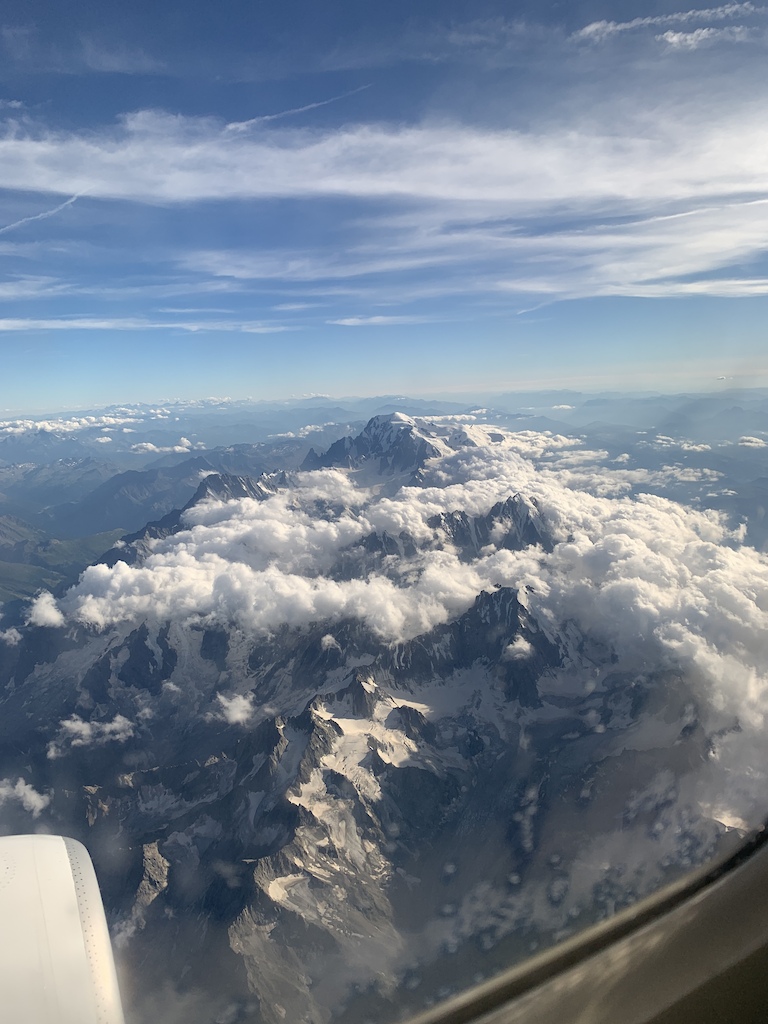
Four friends came together, refreshed their bikes, booked flights, got some camping gear and set out for the mission. Arborist, Bike park designer, IT specialist and bakery owner—each of us in a different field, but all with a love of biking adventures.
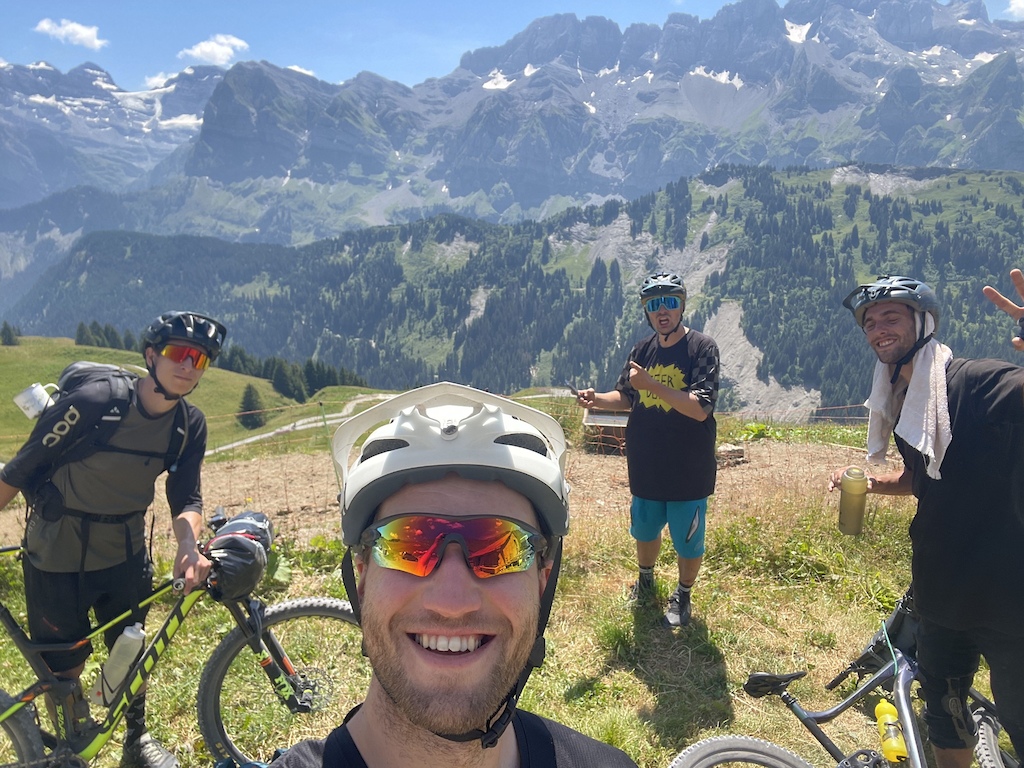

Our adventure started with a train ride from Geneva airport to Lausanne, where we assembled our bikes and made quick decision to visit our Swiss friend, small party before packing our belongings and setting out on our mission.
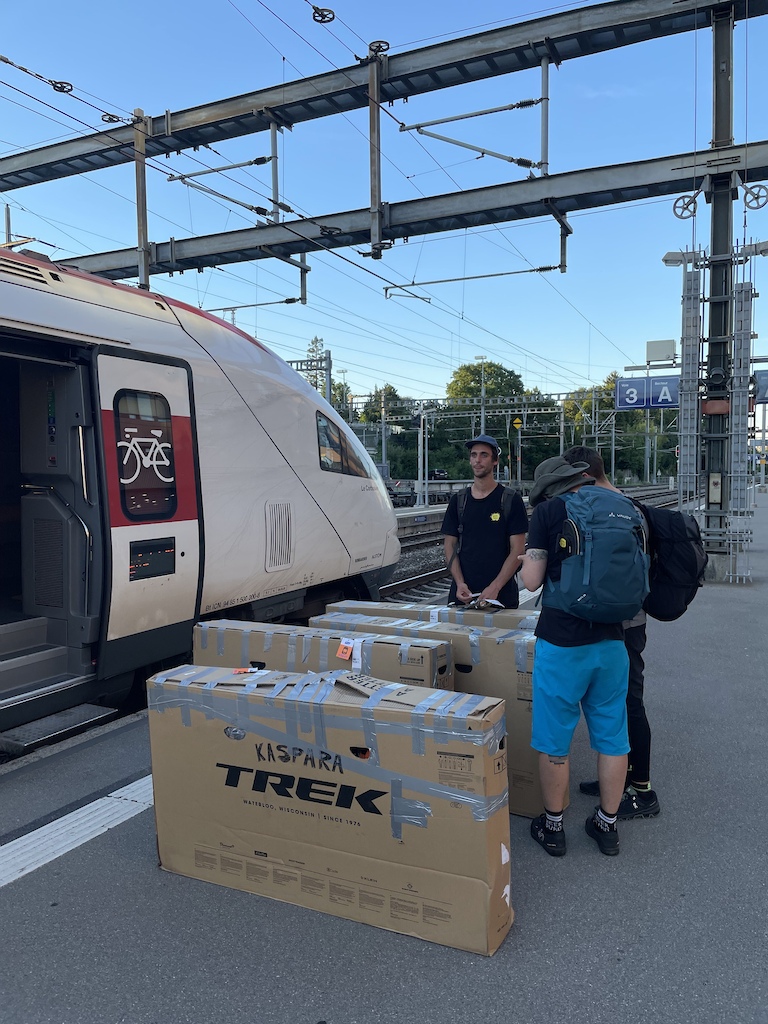
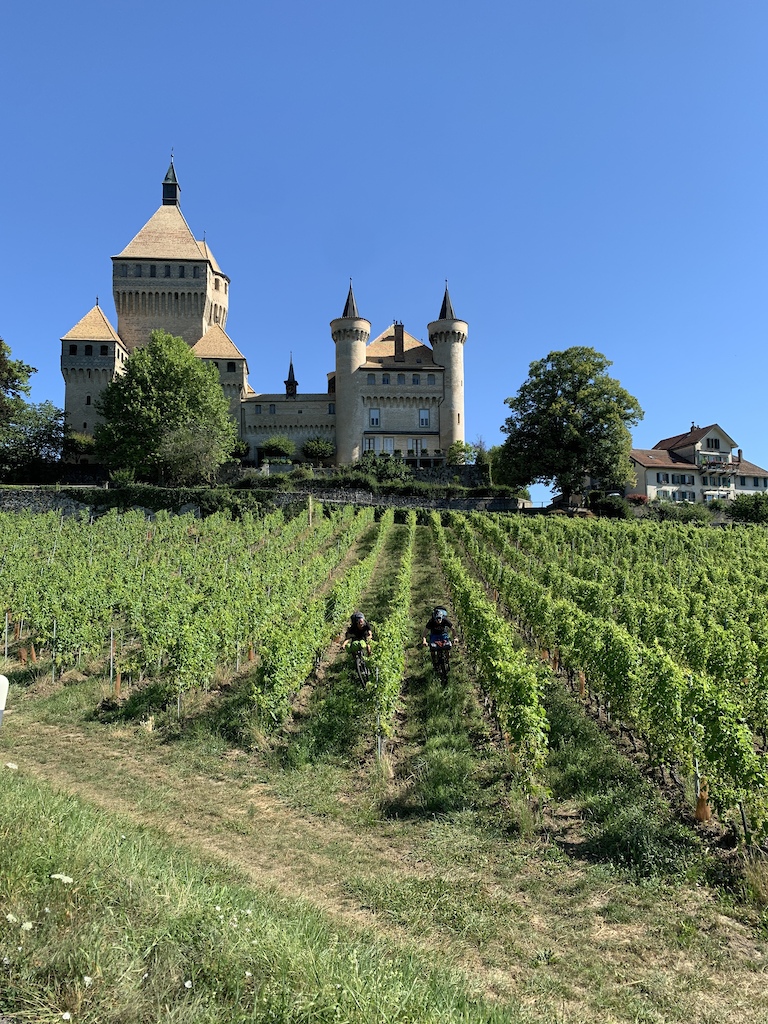
But first we need to cross the big, banana-shaped lake. We used local ferry services and only when we were in the middle of the lake and saw mountain peaks in the distance, we realised where we had thrown ourselves in.
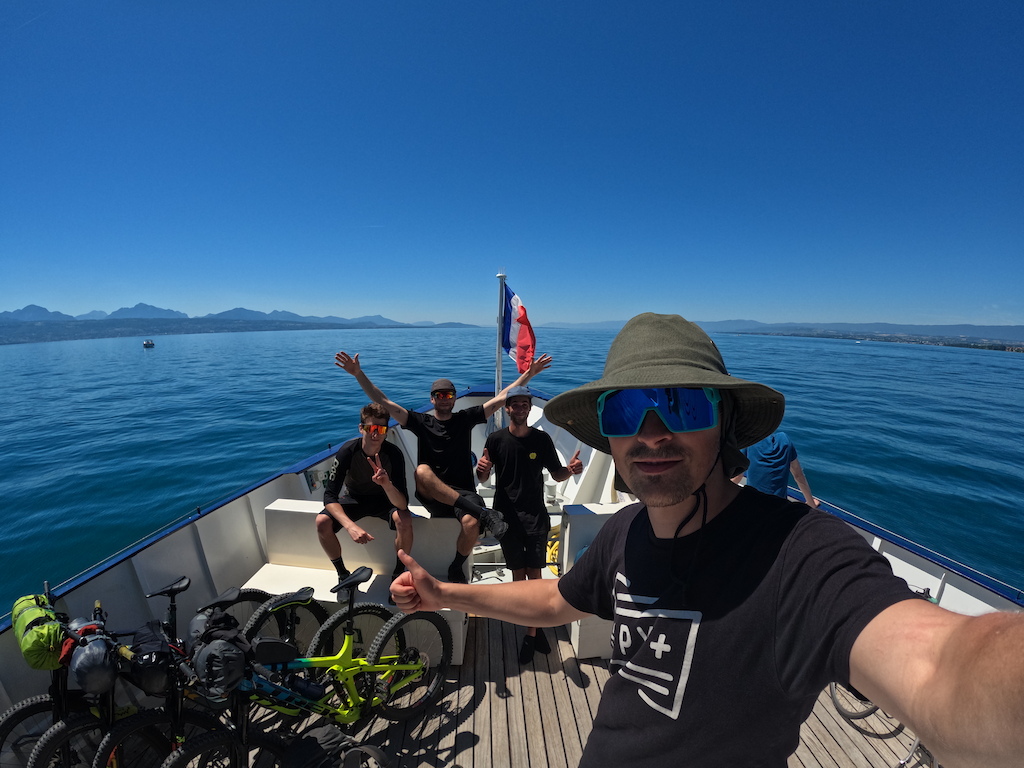
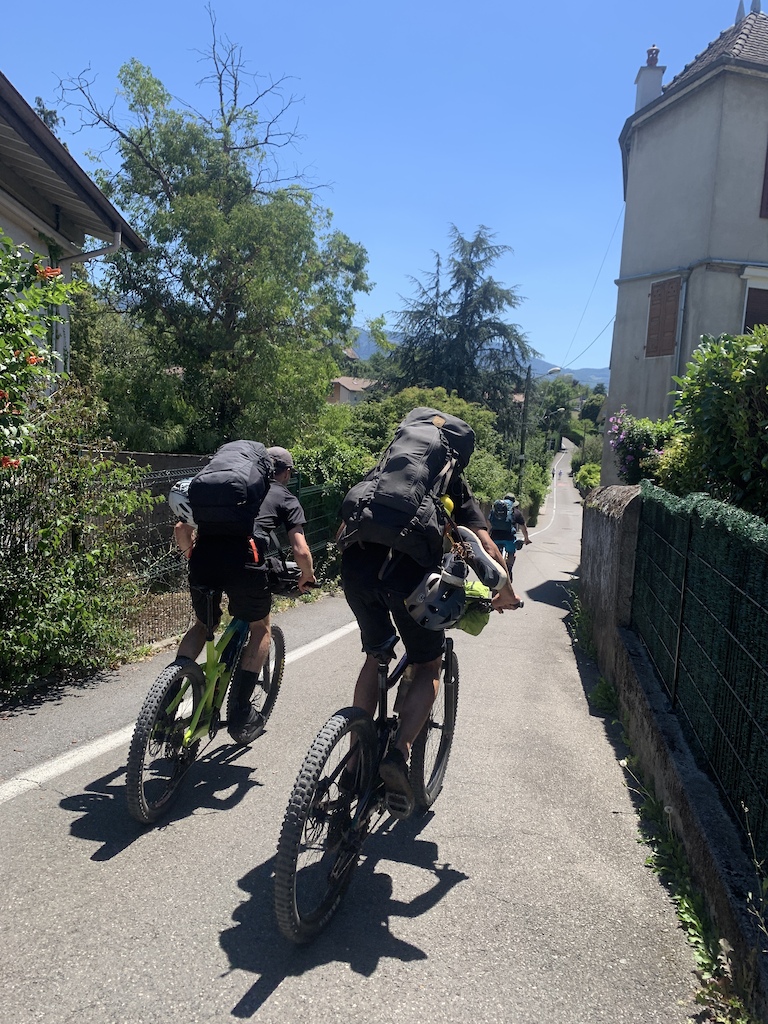
The weather cooperated—no rain, just pure sun—even too much sun— the first two days were extremely difficult. Our bodies weren’t ready for so much bike-a-hiking, hot sun and altitude. But the views around it made it easier to move forward.
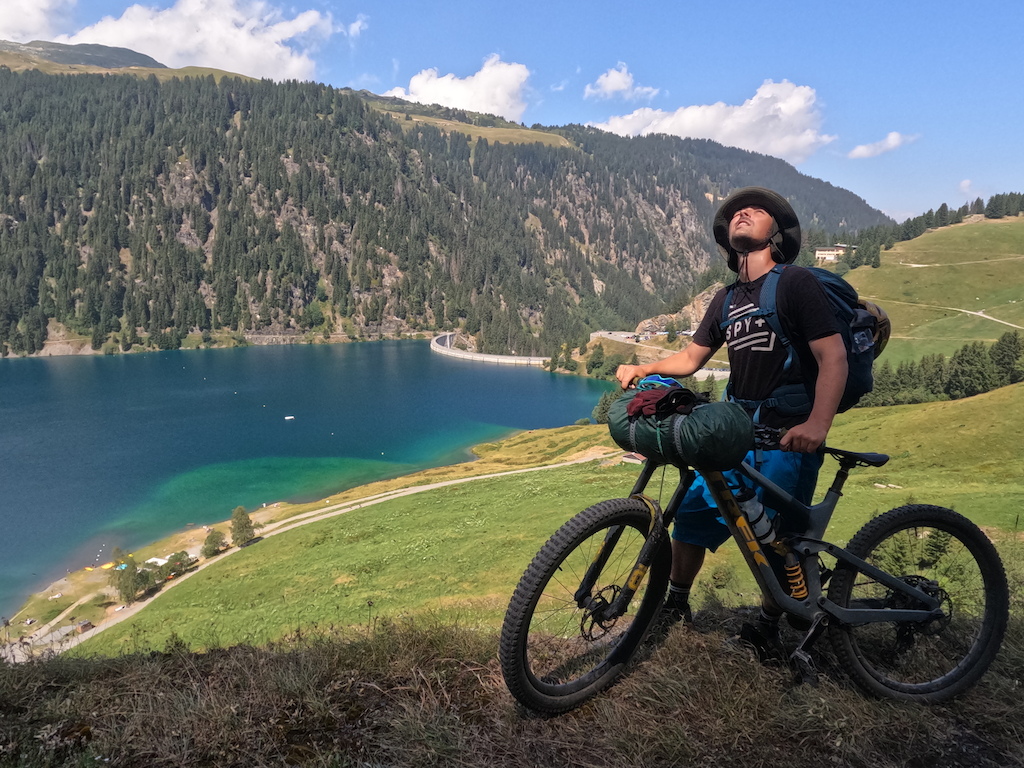
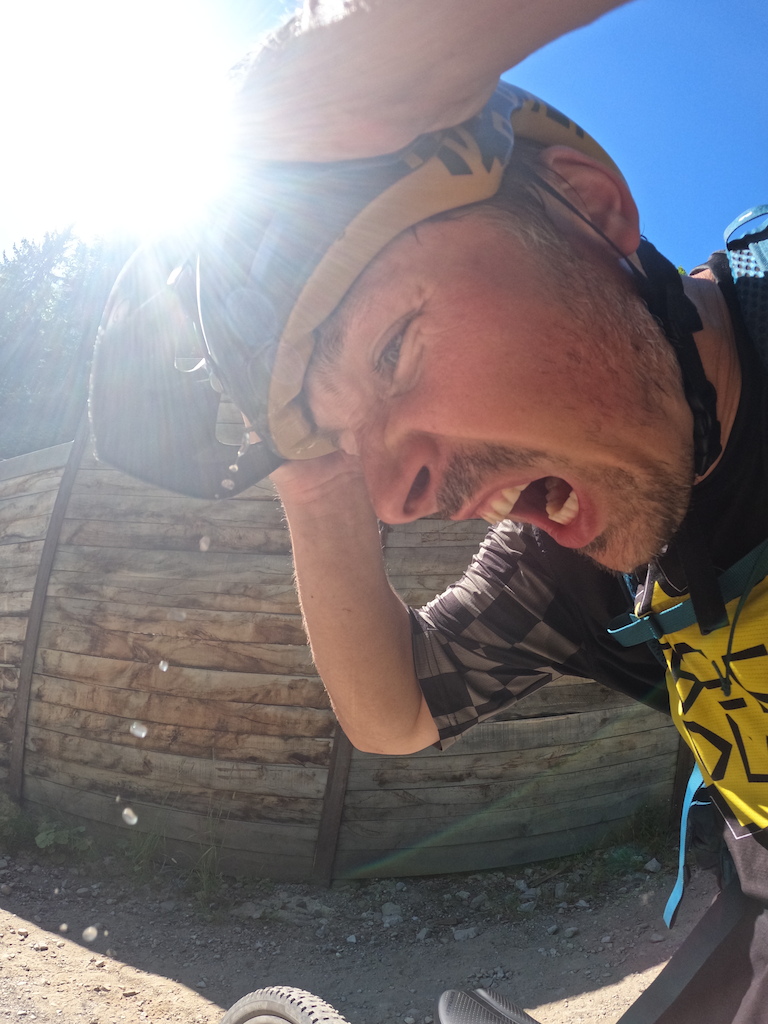
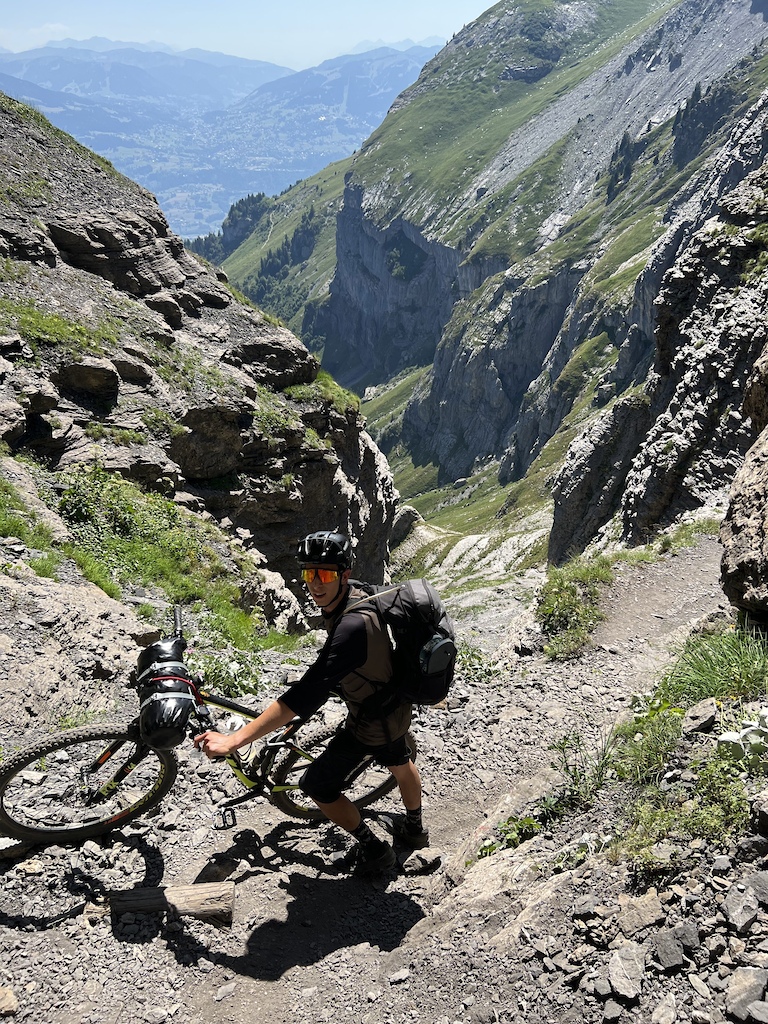
One big mistake we made at the beginning was that we chose pretty difficult hiking trails for our route. Hiking trails are usually much steeper, rougher and unridable. It was even hard to hike there, but we were together with our bikes and camping gear. We pushed bikes up and in some parts, we even pushed them down. But again, hiking trails lead us to more raw, untouched places, even in one natural park, where the views and nature around us were indescribable.
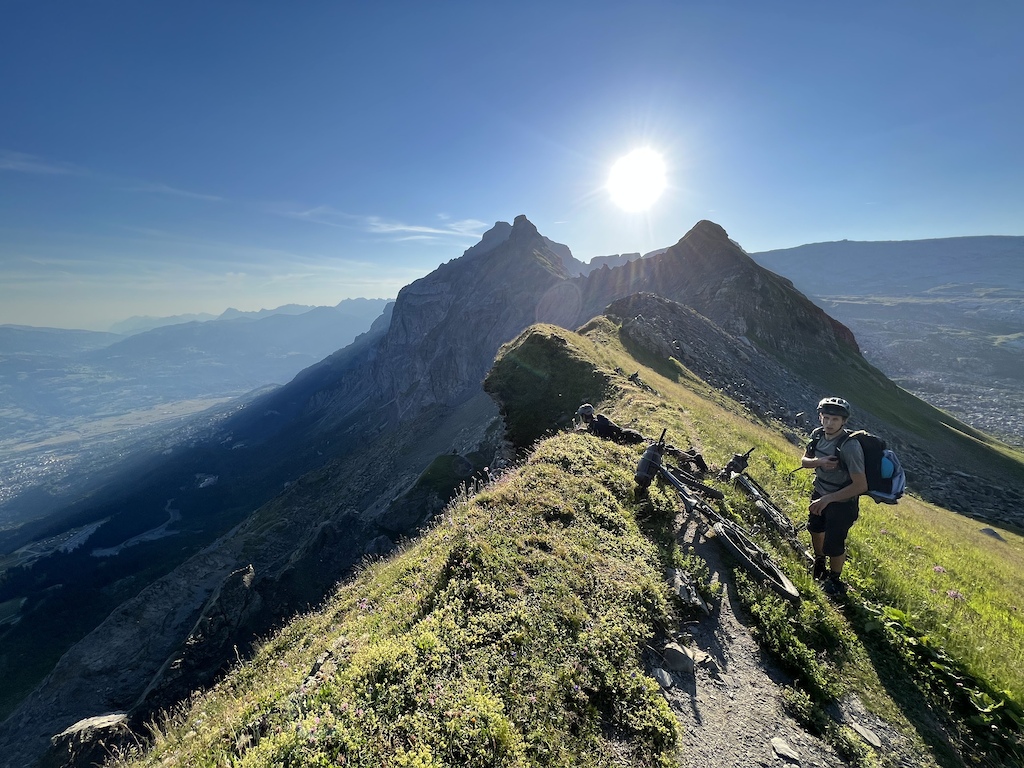
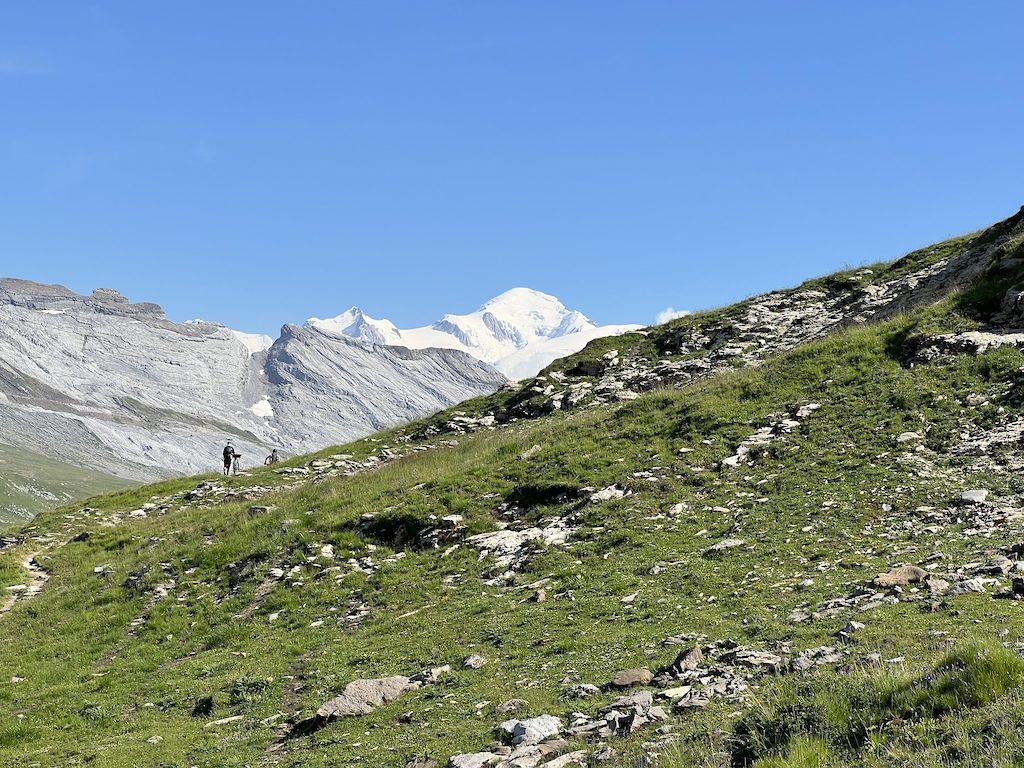
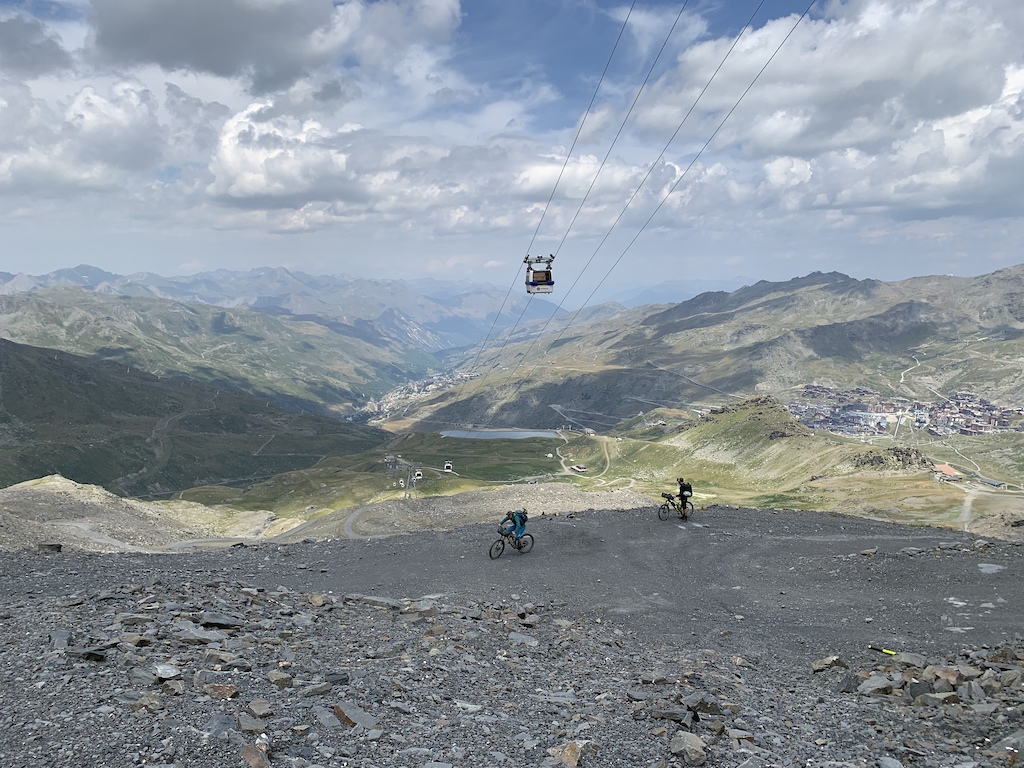
After a while, we decided to change our route, still staying near the GR5, but using more bike-friendly trails and roads. As a result, it was easier to push up, even ride up and very enjoyable single trails or even bike park trails down. In two places, where it was possible, we used ski lifts to save energy so we can spend more time relaxing in the mountains. By the way, as weird it sounds, many summer lifts in Alps don’t work during weekends.
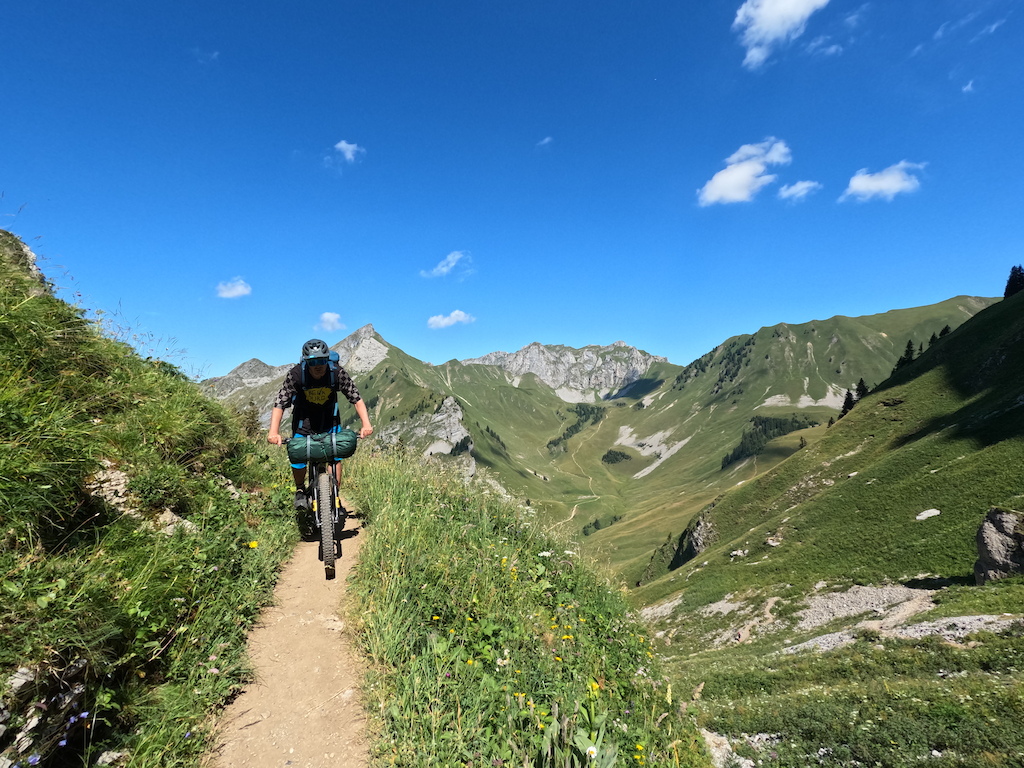
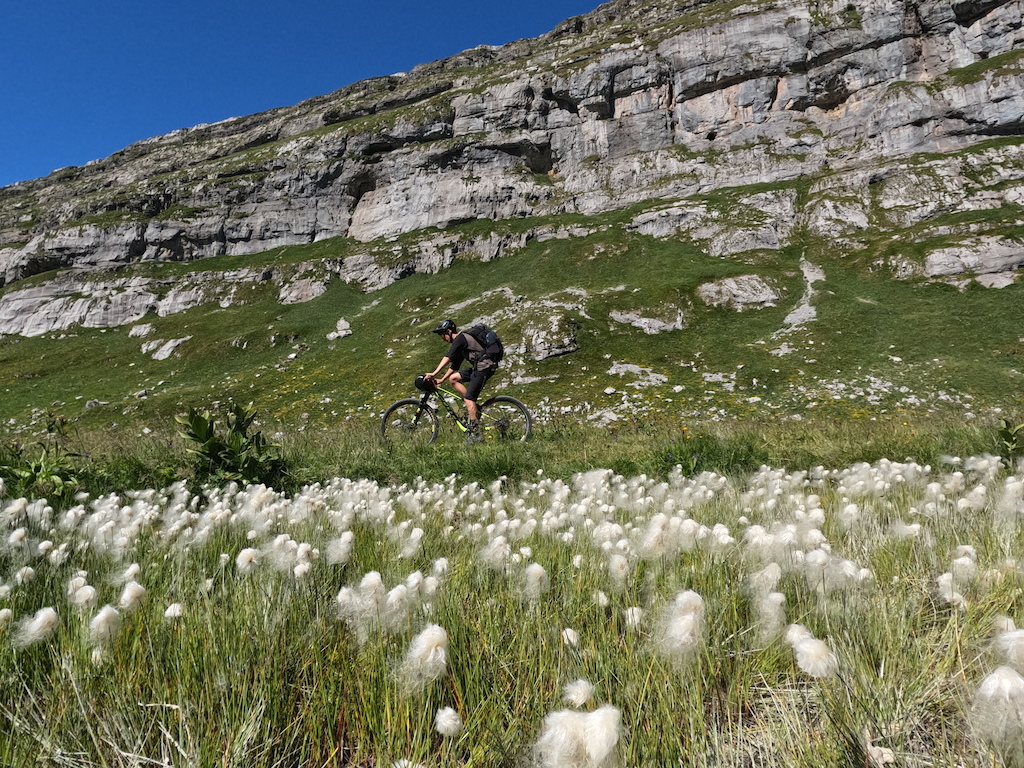
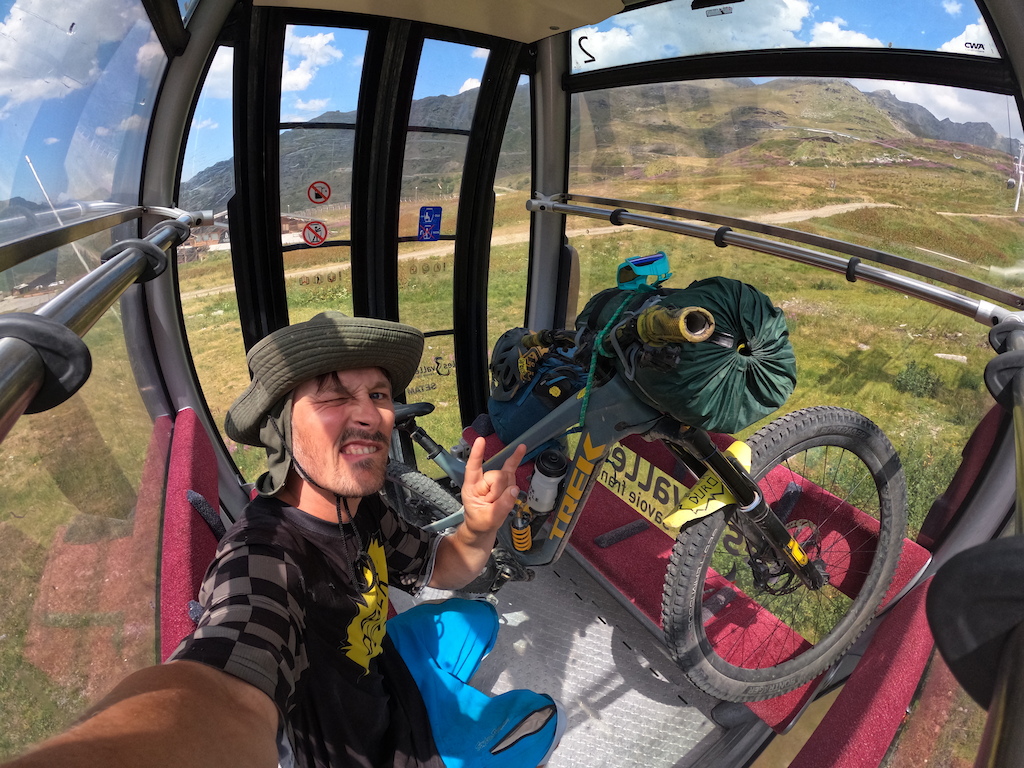
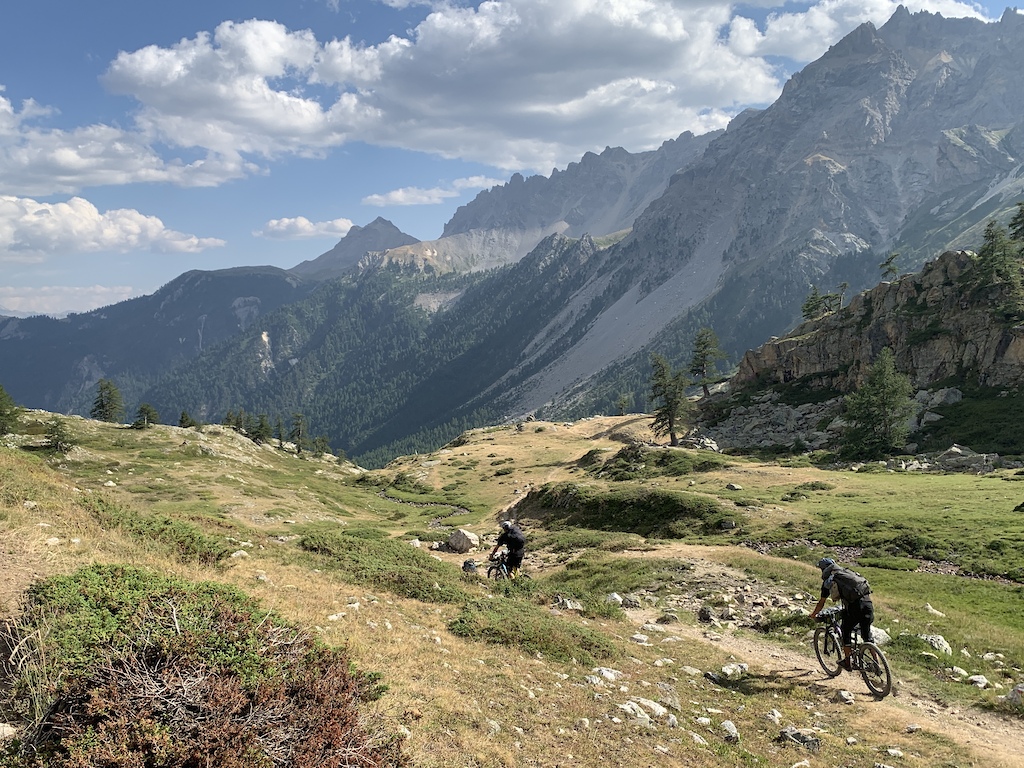
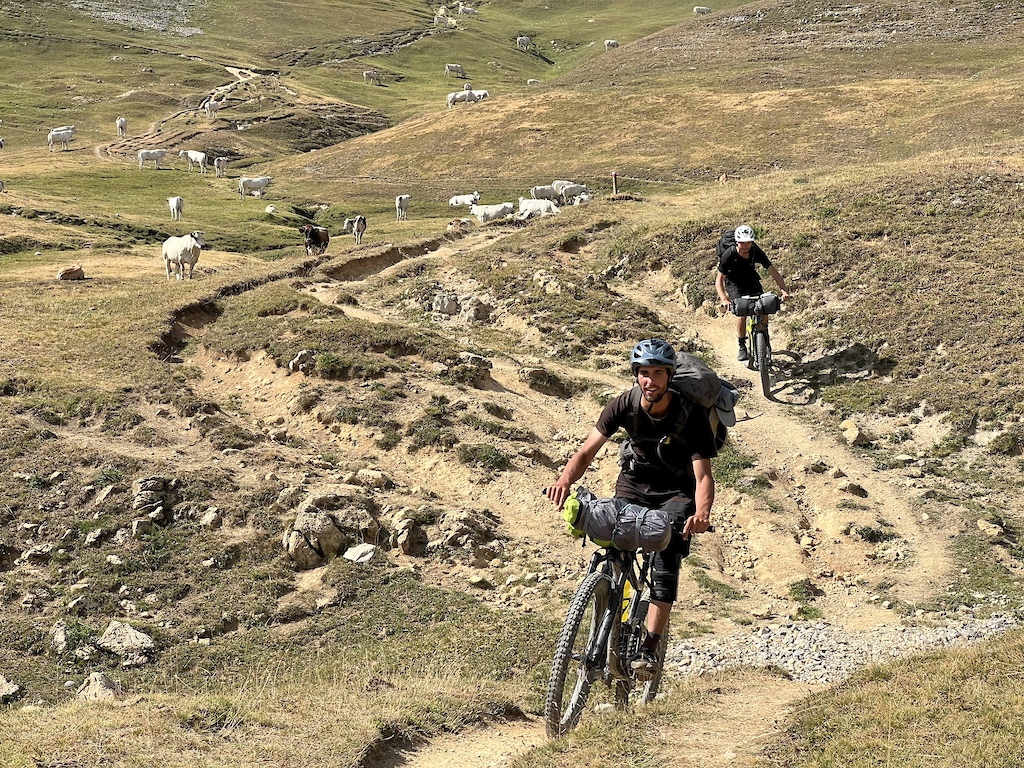
As we spent more and more days on this trip, it felt more and more easy. Our bodies felt better, but it was still hard. European heat wave was all over the Alps…
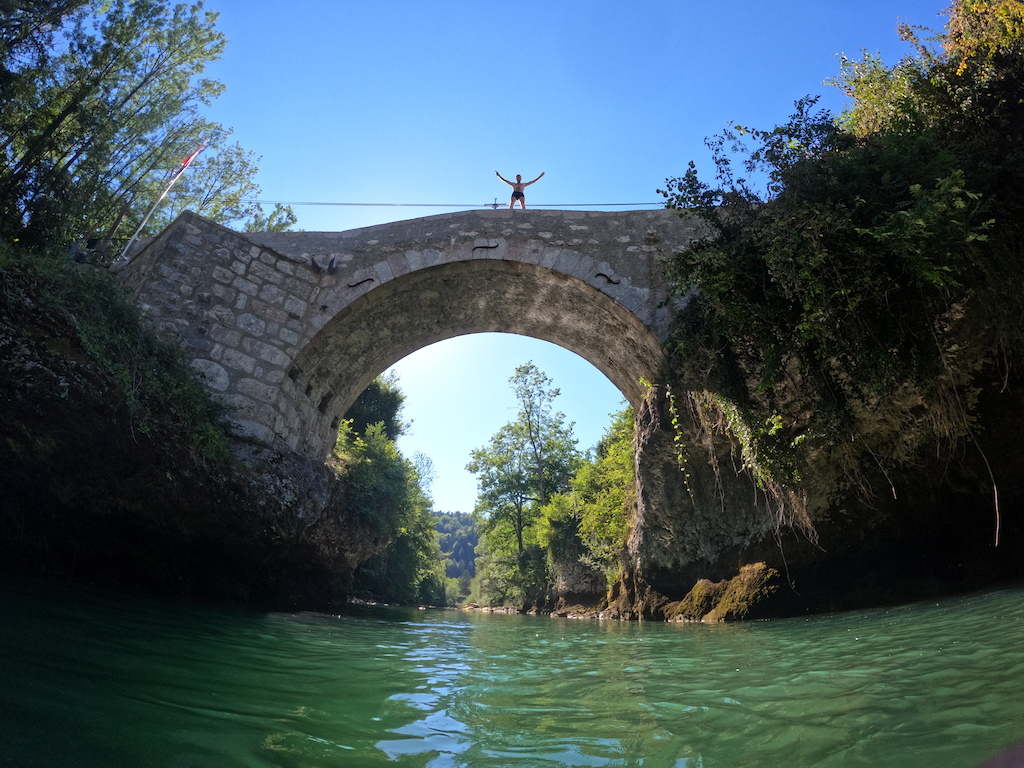
The average temperature during the day was between 30 and 35 degrees Celsius. So we usually moved in the mornings and then in the evenings. During the midday hot sun peak times we spent somewhere in shadow, drinking cold beer, cooking some camping food or sleeping under a tree in the shadow.
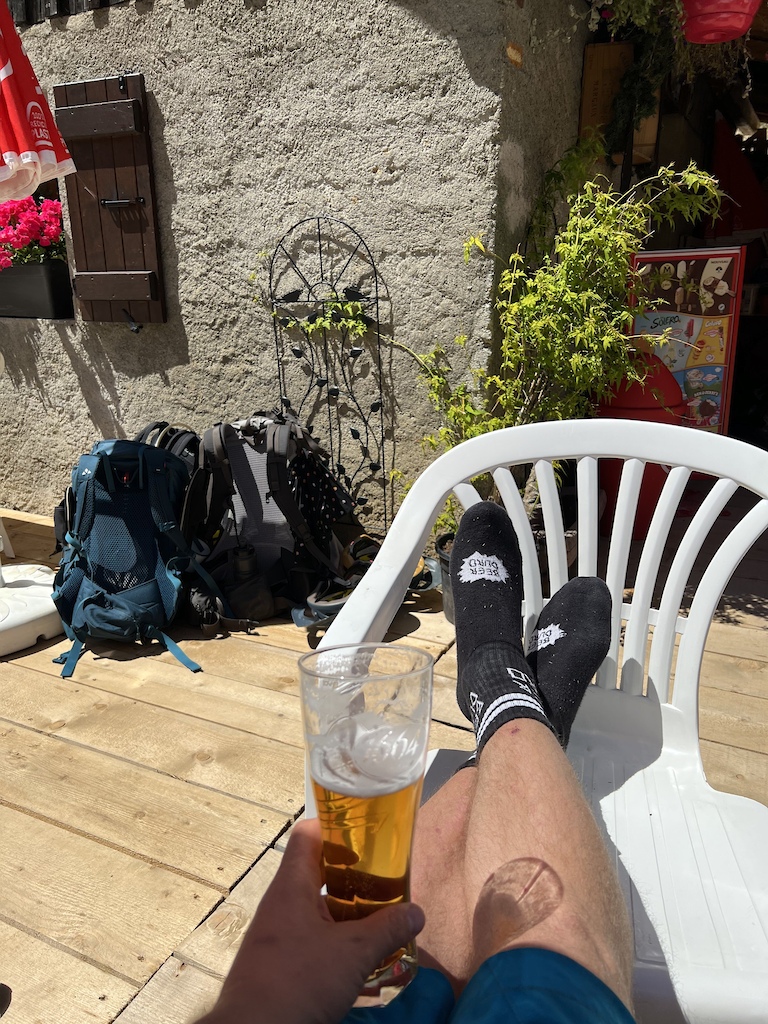
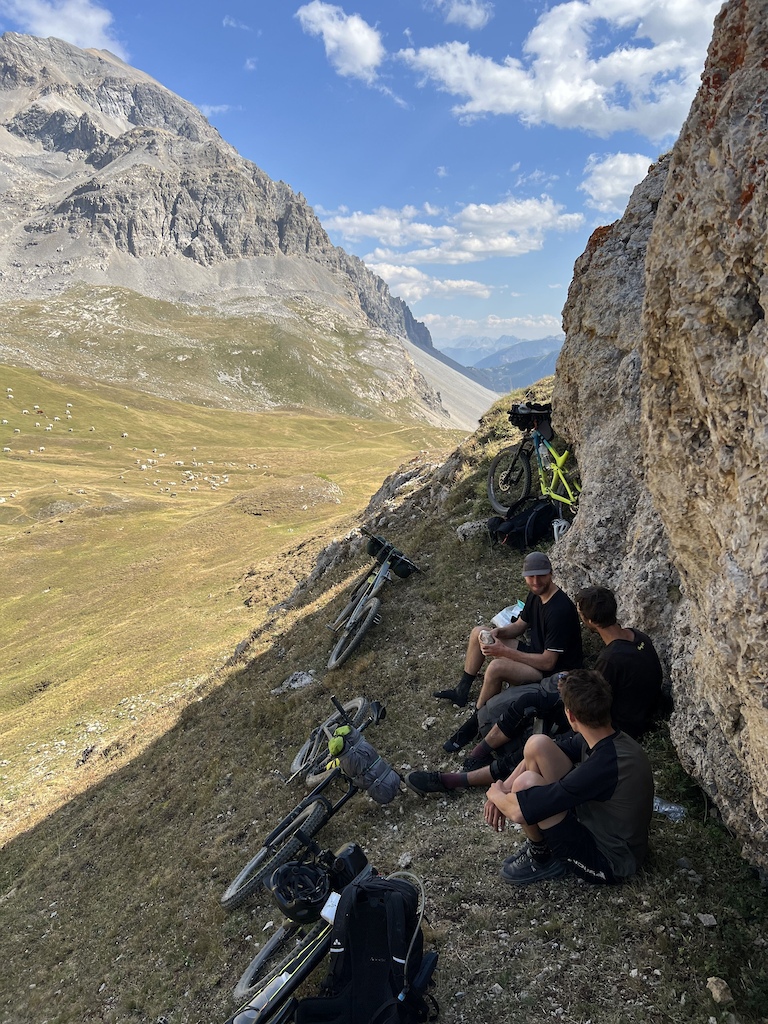
Basically, we moved over the Alps without any big plan or route. We just knew our destination was somewhere about 2 weeks away in Nice. Our only helper was a GPS watch that led us through mountains and helped us choose trails and paths to ride on. We found some of the most brutal, technically unridable trails out there, but we also found some of the best trails of our lives.
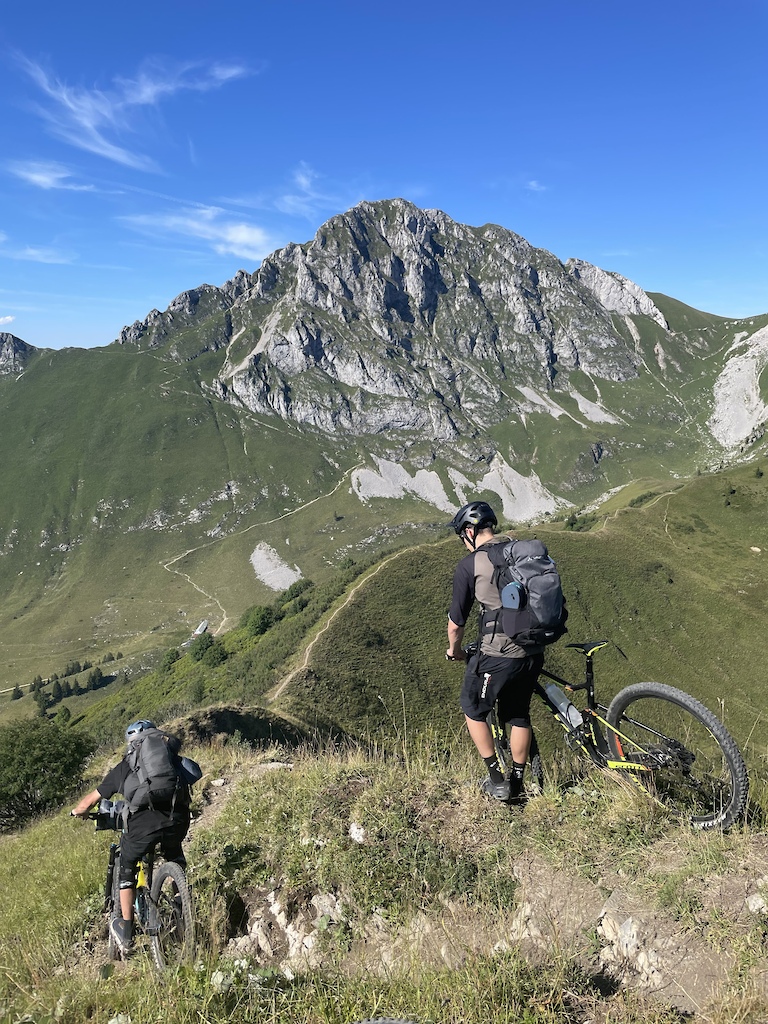
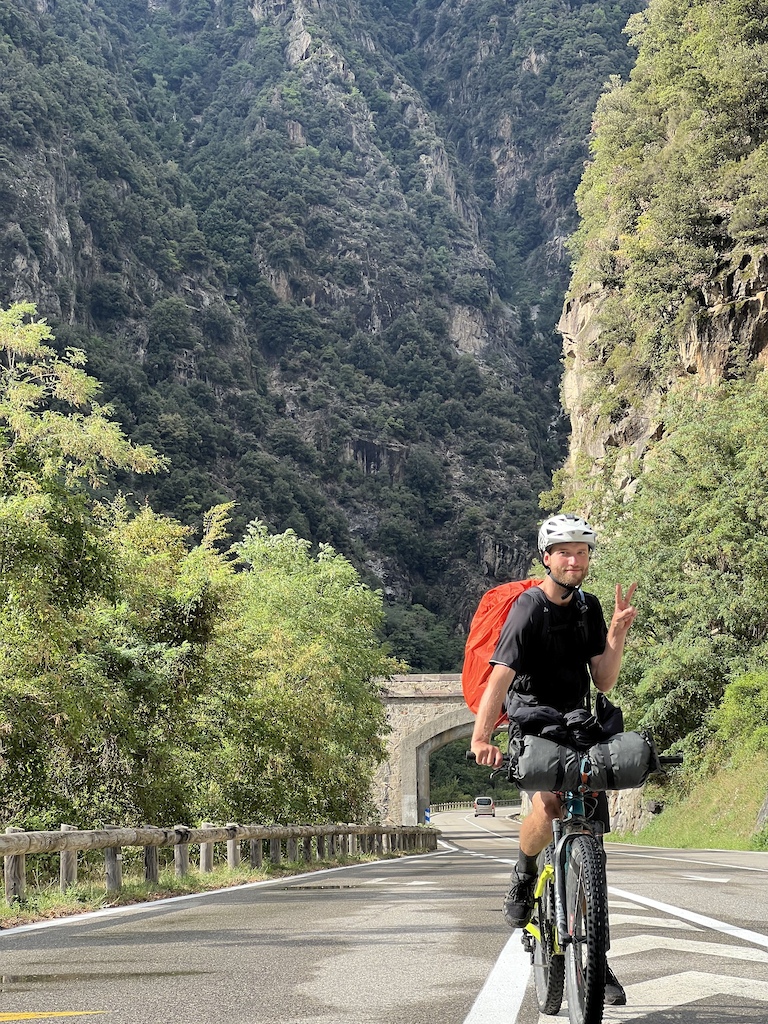
You never know what mountains can bring. What the next valley or trail after a mountain pass can bring. Dropping into the unknown every day, we only needed two things: a place to sleep (set up our four tent camp) and a place to eat. All other things are not so important during such a trip.
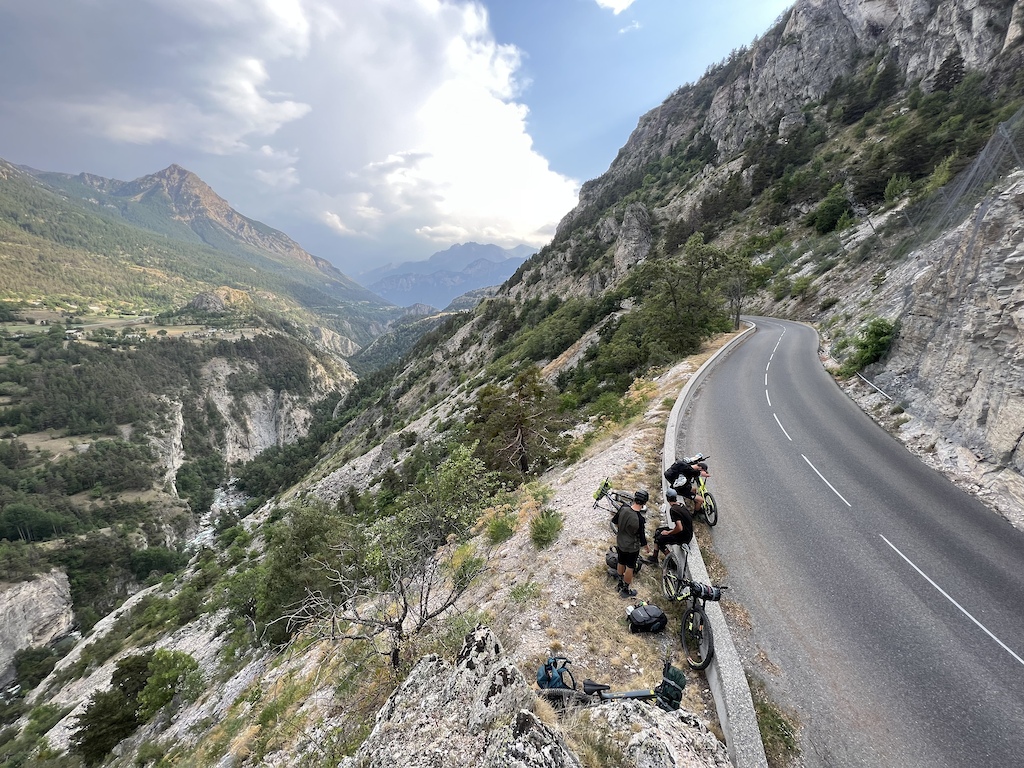
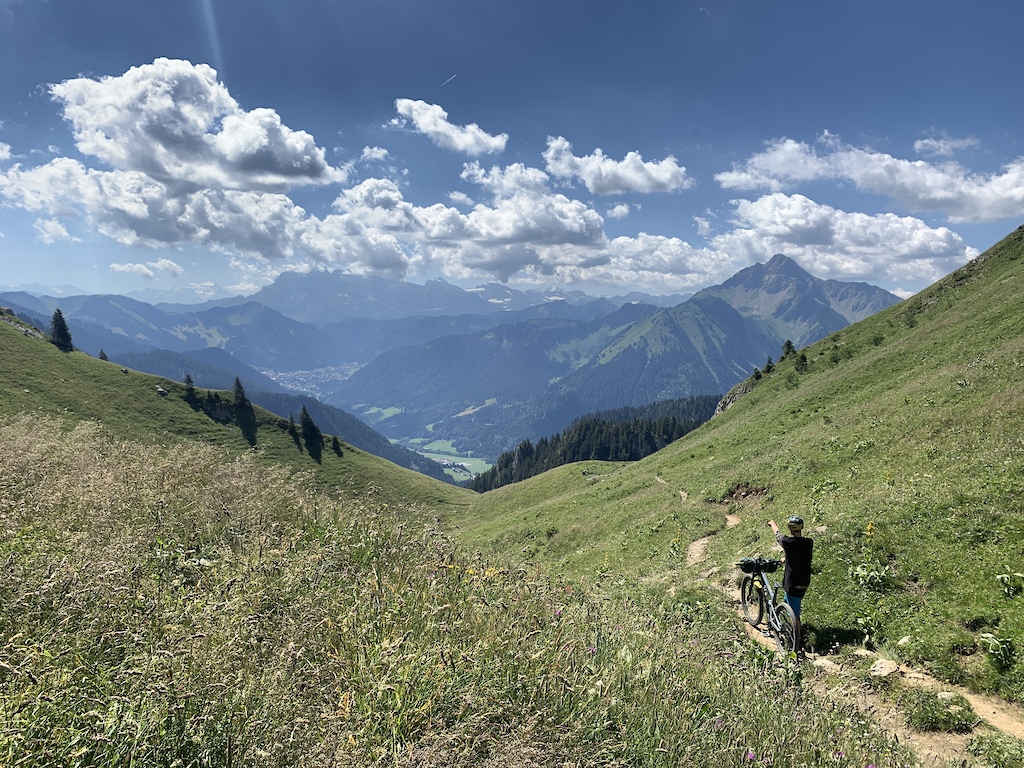
Accommodation. Sleeping areas—camping areas—must be free and close to a water source so you can wash clothes and dishes, potentially get water for food preparation or simply cool off with a dip in cold water after a long day on the bike. Somewhere away from big crowds and cities, potentially in the shadow or with some tree or roof cover above you.
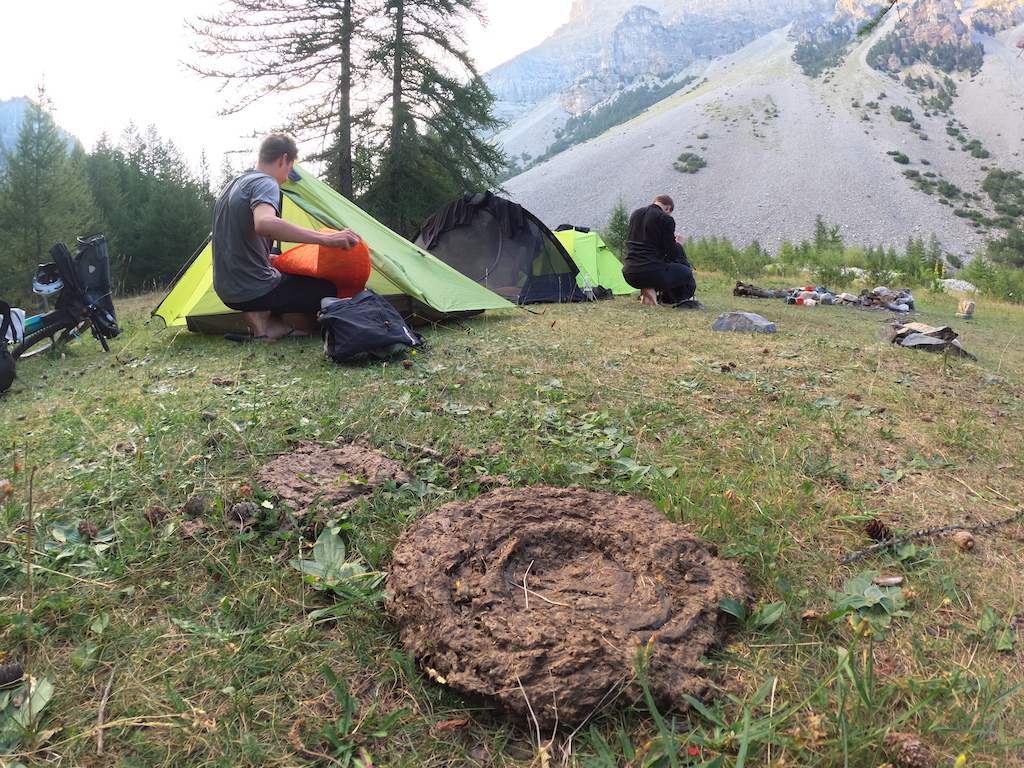
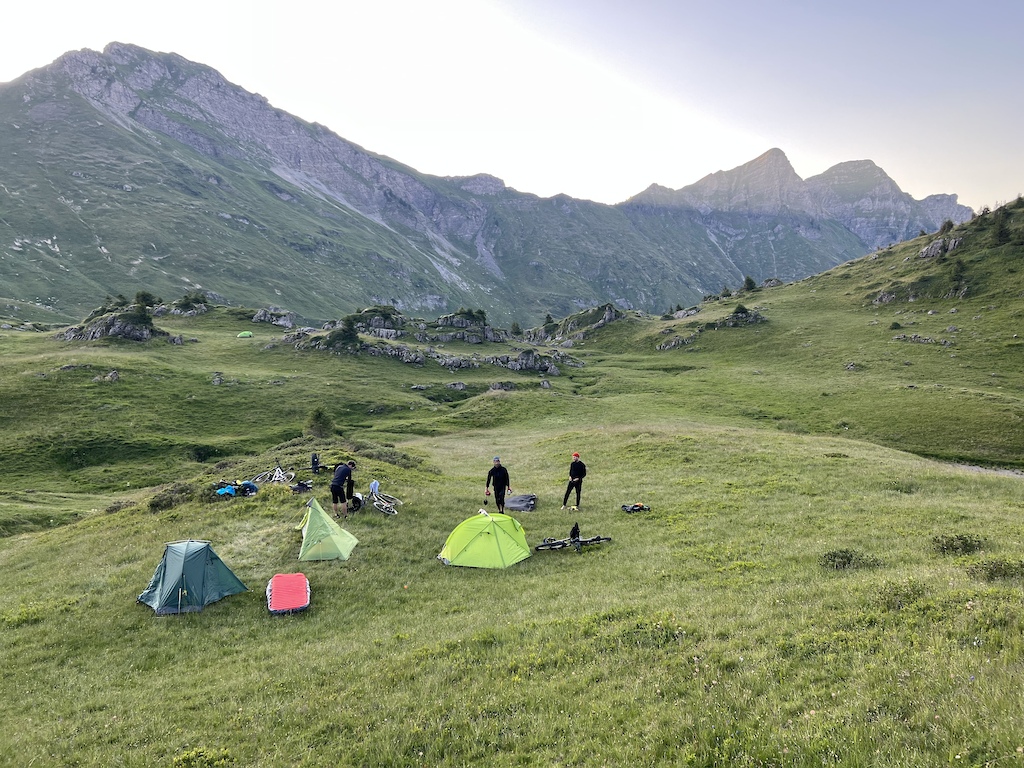
We used single-person sleeping options, meaning that we didn’t take a 2-person or 4-person tent. Each one of us had a different setup. Two of us had a Rhinowolf 3-in-1 setup with tent, mattress, and sleeping bag built into one bag, and the other two of us had a single, very light tent setup. So consider to bring your personal best choice for well deserved night sleep.
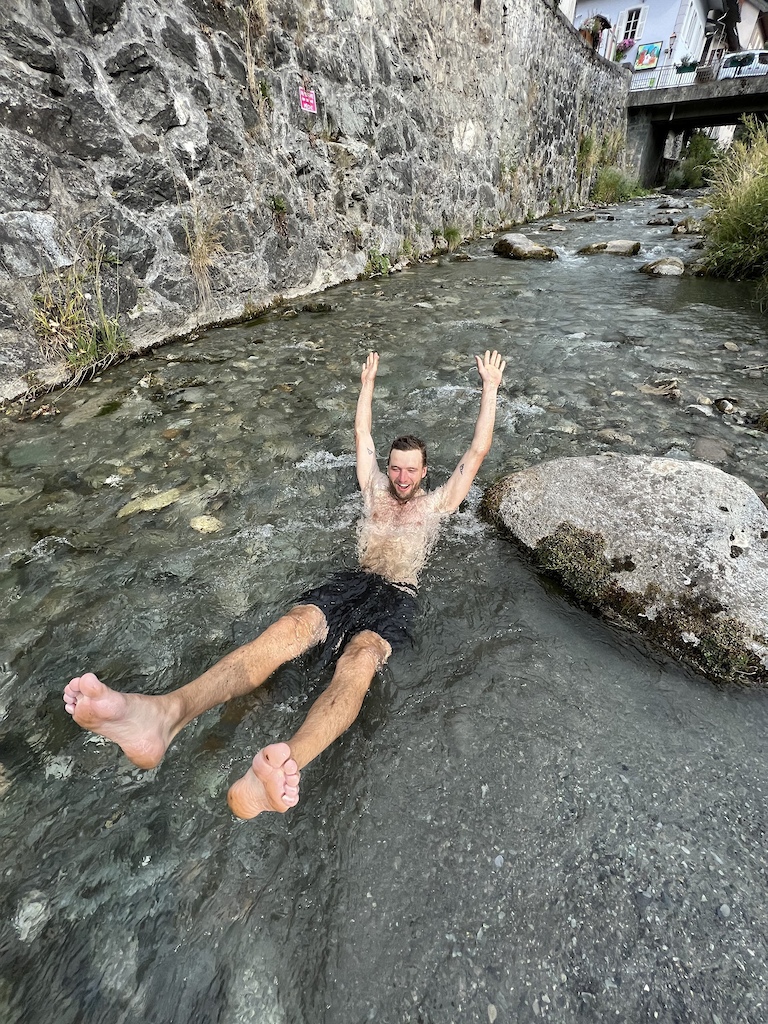
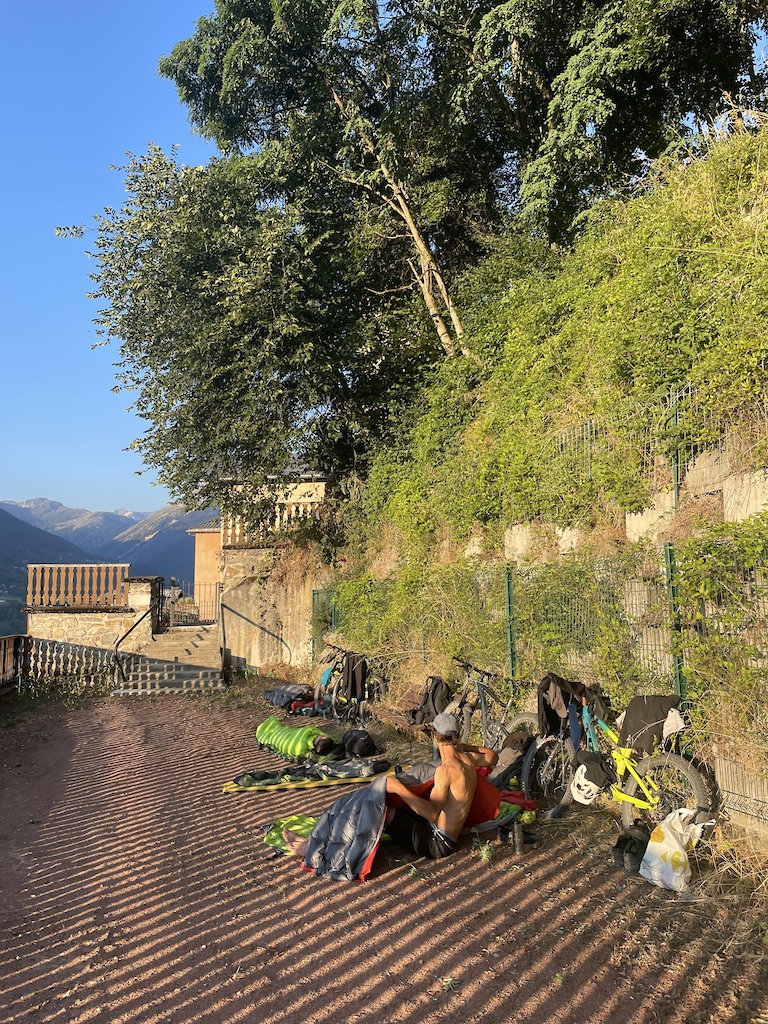
Food. This is crucial when engaging in high-intensity fitness activities in the mountains. Healthy food, but we also had our own budget for the entire trip. So our nutrition was a mix of self-made meals, a once-a-day restaurant visits, a lot of take-away snacks and fruits and a lot of water. Even if your bottle is nearly full, always refill it as soon as you see a source of water on your route. Every day cold beer rituals were also involved after a long day in the hot sun or a tasty French wine with cheese and baguette. We brought with us food from shops for at least 2 meals, and restocked regularly as soon we came across some grocery shop. We tried to include as many calories and nutrients as possible in our homemade meals. Porridge, pastas, nuts, fruits, muslies, beans, vegetable mixes, just to name a few. During the trip, I gained some nice shape on my dad-bod and lost a few kilograms. So we did something right up there in the mountains. Of course, physical exertion and sweating in the hot sun contributed to my fitness here.


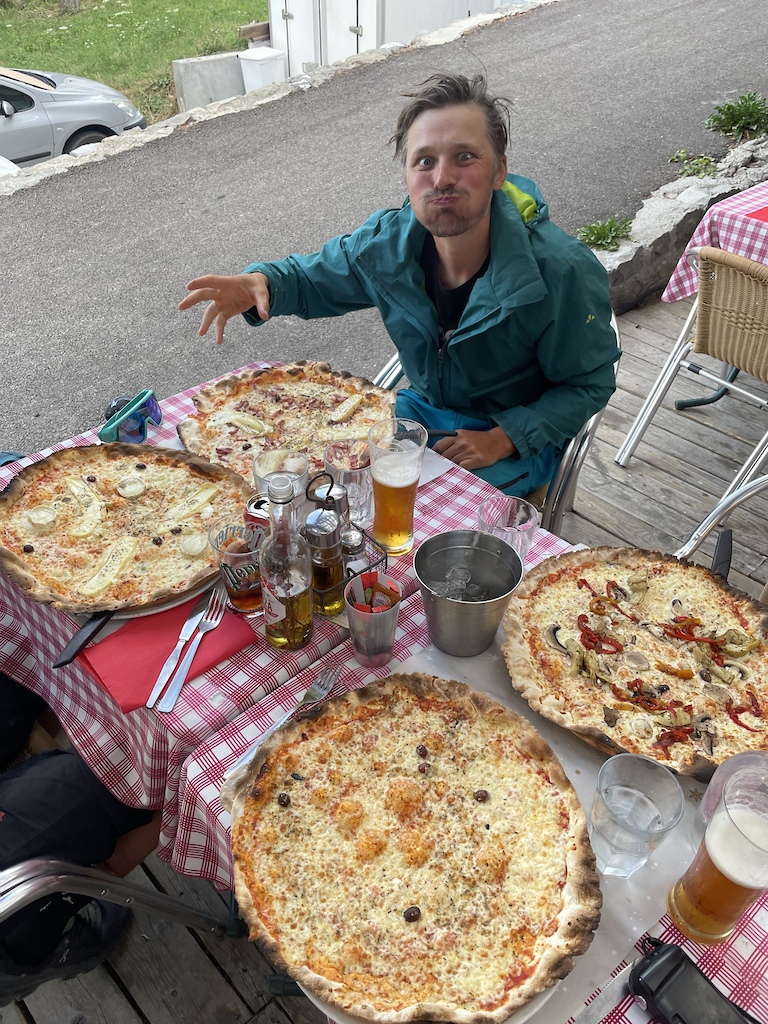
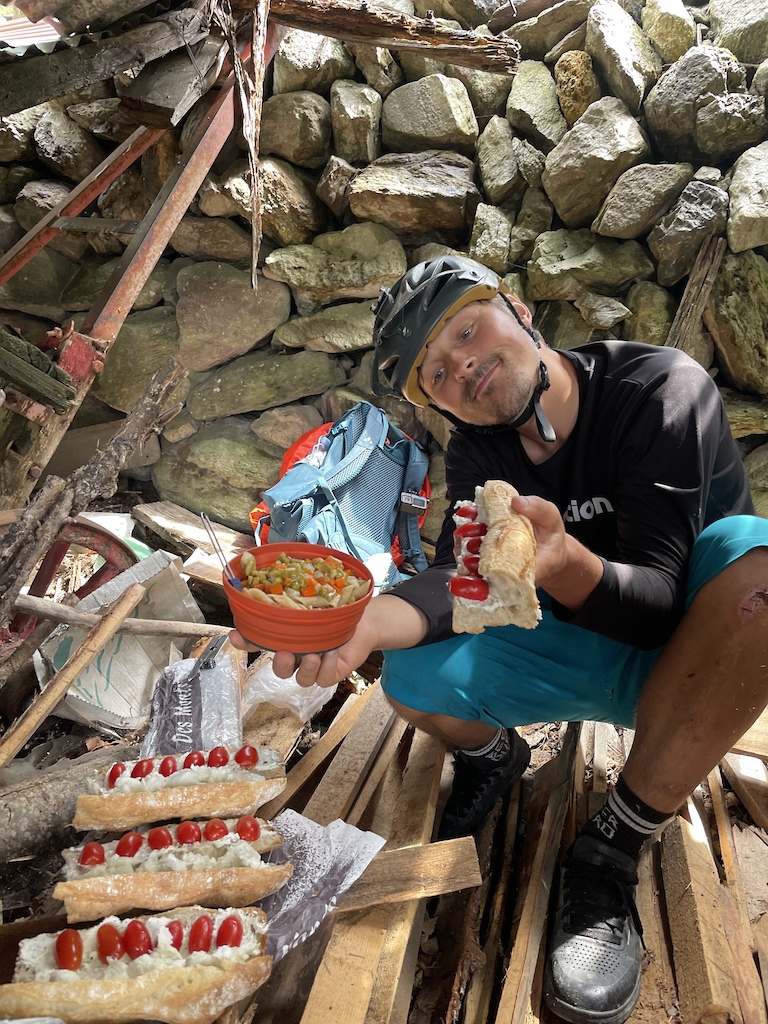
Bike setup and spare parts. The GR5 route is possible to make with road bikes, gravel bikes, even classic MTB, but this time we chose the weapon of our choice—trail/enduro bikes. It was more difficult to pedal uphill on asphalt roads or push these bikes on steep hiking trails, but we loved our downhill rides. And also the trails and locations that these heavy-duty bikes took us. We could access and ride much rougher terrain, so not so much smooth gravel or asphalt roads but proper single trails with rough rocky surfaces as well.
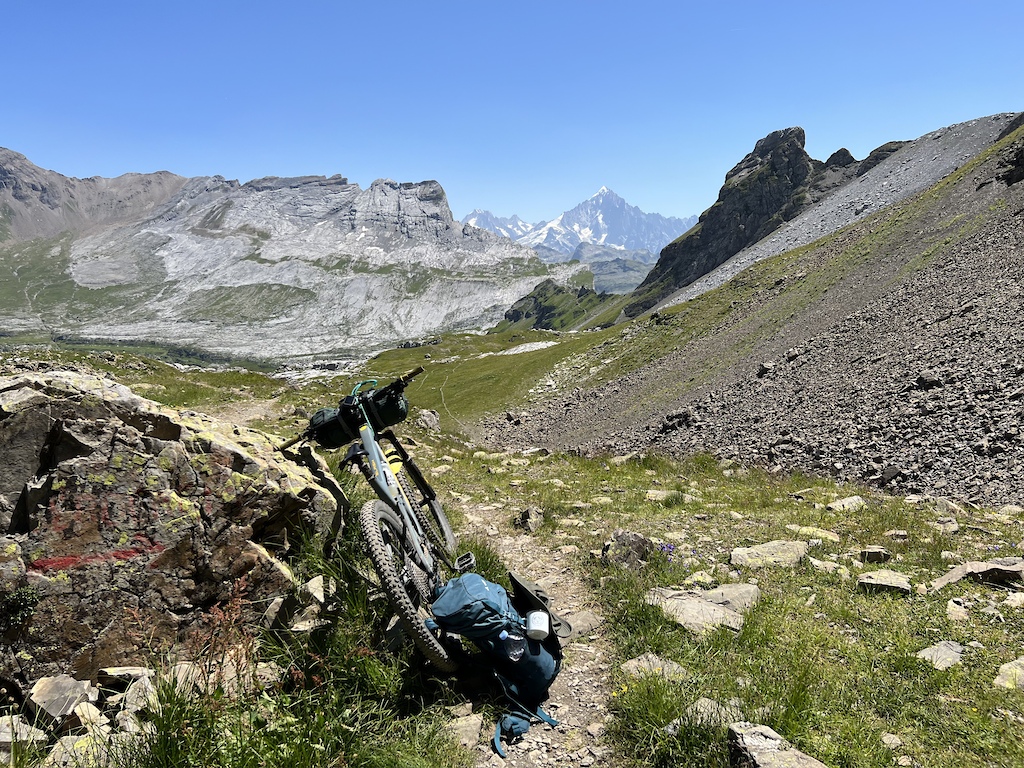
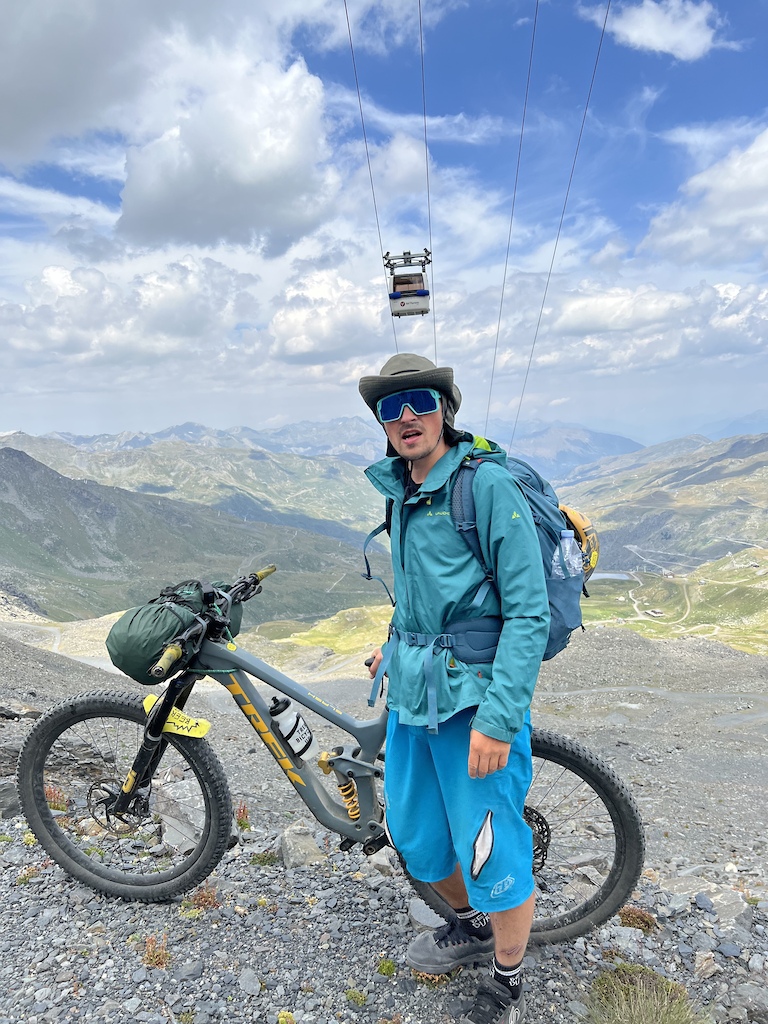
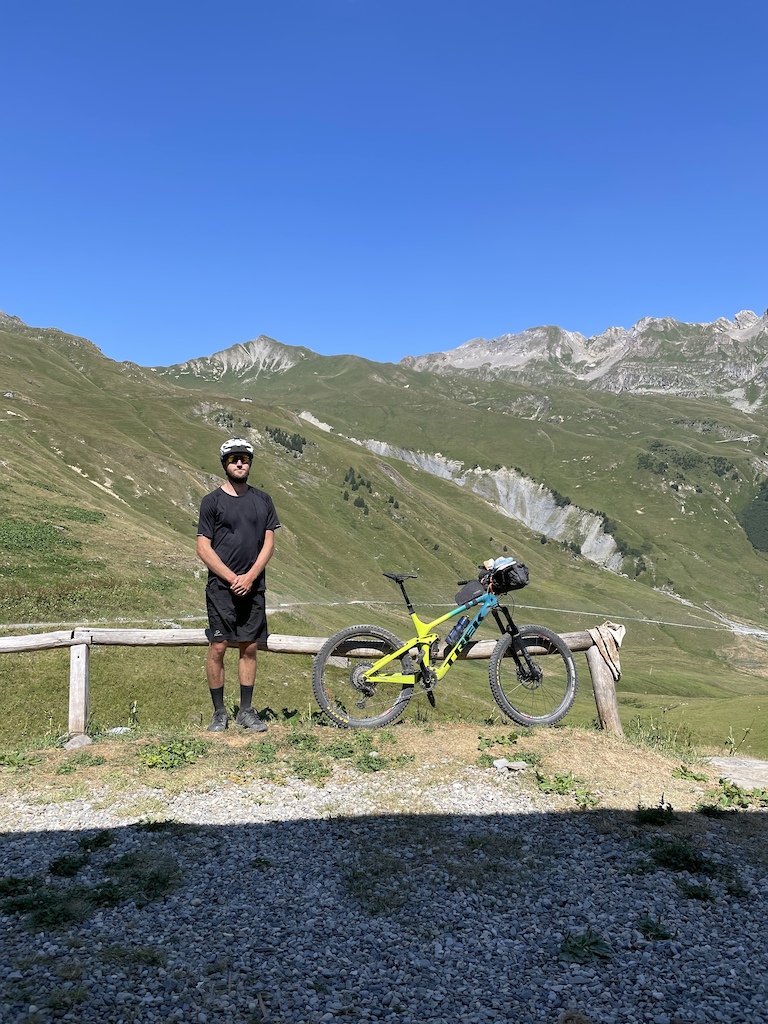
Each of us had our sleeping equipment strapped to our handlebars. Some riders may have had extra space in the frame box or strapped a small top tube bag for quick access. But most of our stuff we carried in our backpacks. Also, first aid kits for our bikes. Because you never know what might happen to your bike and our storage was limited, we decided to bring the following items: allen keys, spare tubes, patches, a mini pump, tubeless tyre stuff (plugs, emergency foam,…), chain links, chain lube, one duck tape, plastic zippers and a superglue. During these 2 weeks, we used only 1 tire plug, emergency foams, and chain lube. There is nothing that duck tape can’t fix!

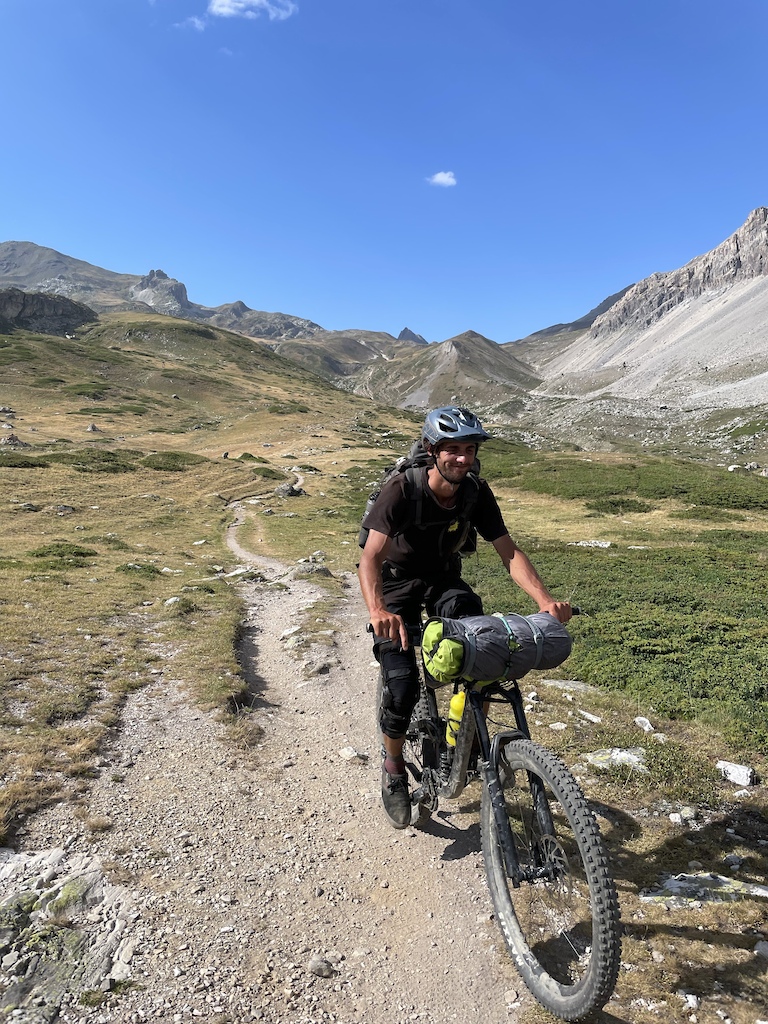
Route navigation and electronics. The route was inspired by the GR5, as I mentioned briefly above. So we adjusted this route by inserting bicycle-friendly trails and paths. But after the first 3–4 days, we adjusted our route even more, adding even more easy bike paths to reach mountain tops. Choosing Strava lines where no one has ever ridden before wasn’t a good idea. So make sure you have at least one working mobile phone with a signal and a GPS device to help you navigate your way through the Alps. Every other evening we planned our route for the next one or few days.

You can find our routes in Edgar’s Strava profile

So flexibility in route setup is key and could help you a lot during these missions. On our mission, we used our Garmin watch strapped on the handlebar for easier navigation. There is no need to have smart watches for all 4 riders, so you have more devices to charge. We went with the minimum. Personally, I kept my phone in airplane mode and only use it to take pictures. So I charged it maybe twice a week in some café while we ate some food. The most used electronic device was GoPro camera with 10 batteries ( also for reason, that we dont need to charge it)
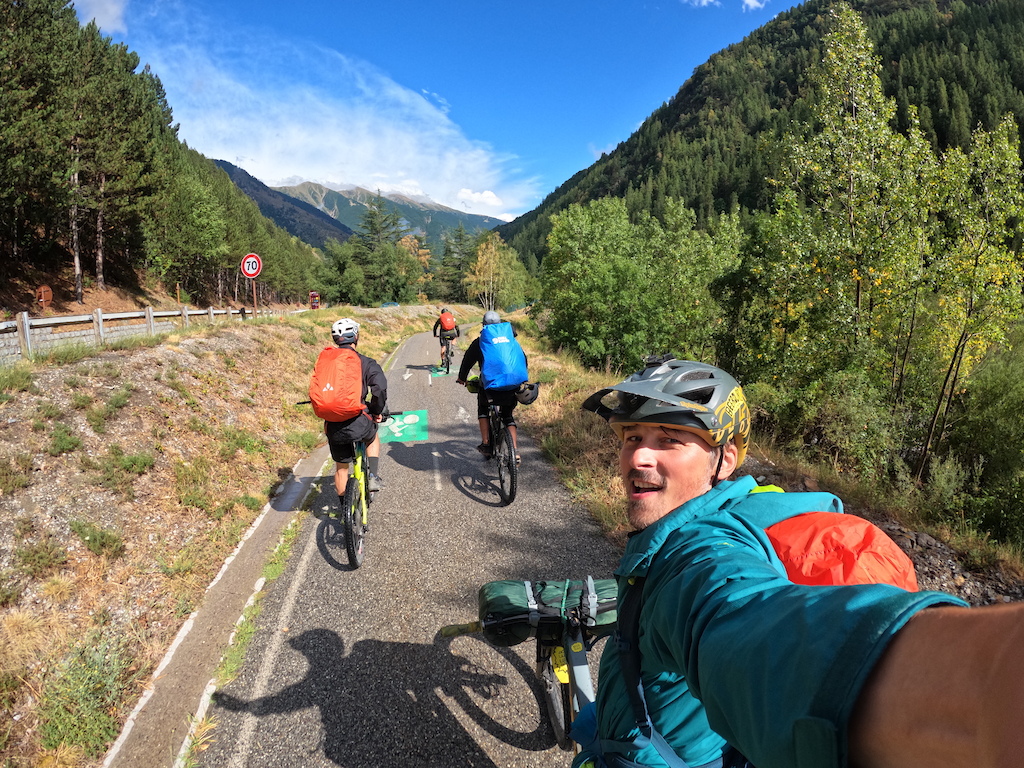
Clothes. We were extremely fortunate with the weather during these two and a half weeks. We had about two cloudy days and one rainy day. As packing needed to be very compact, we took only the really necessary items.

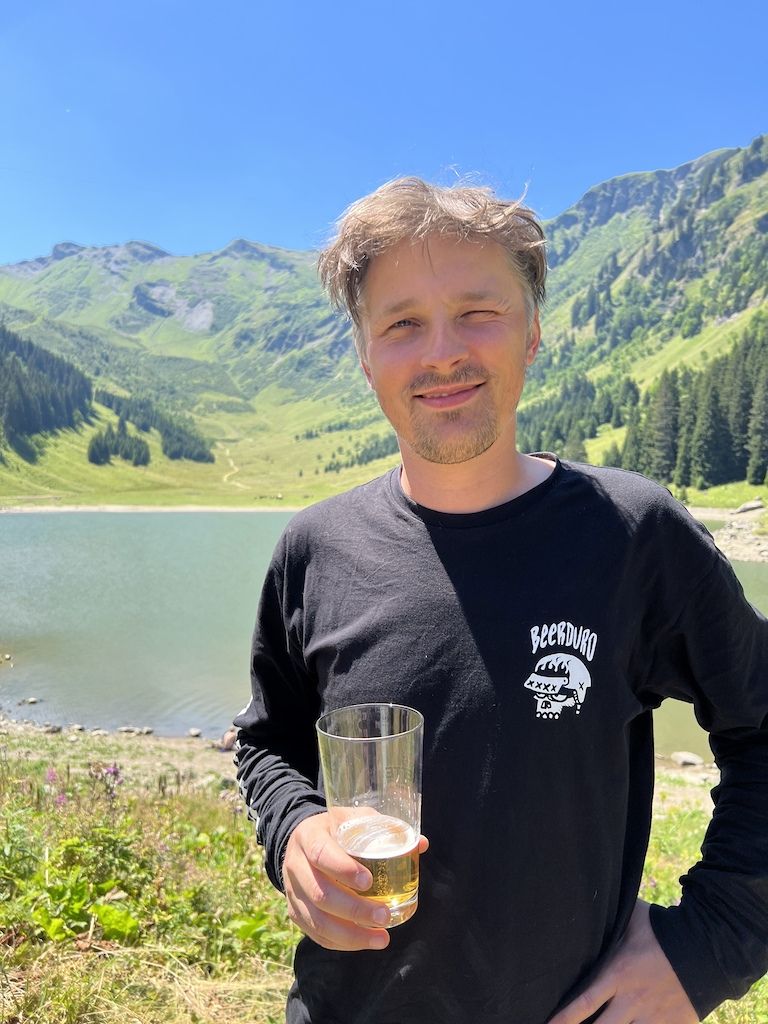

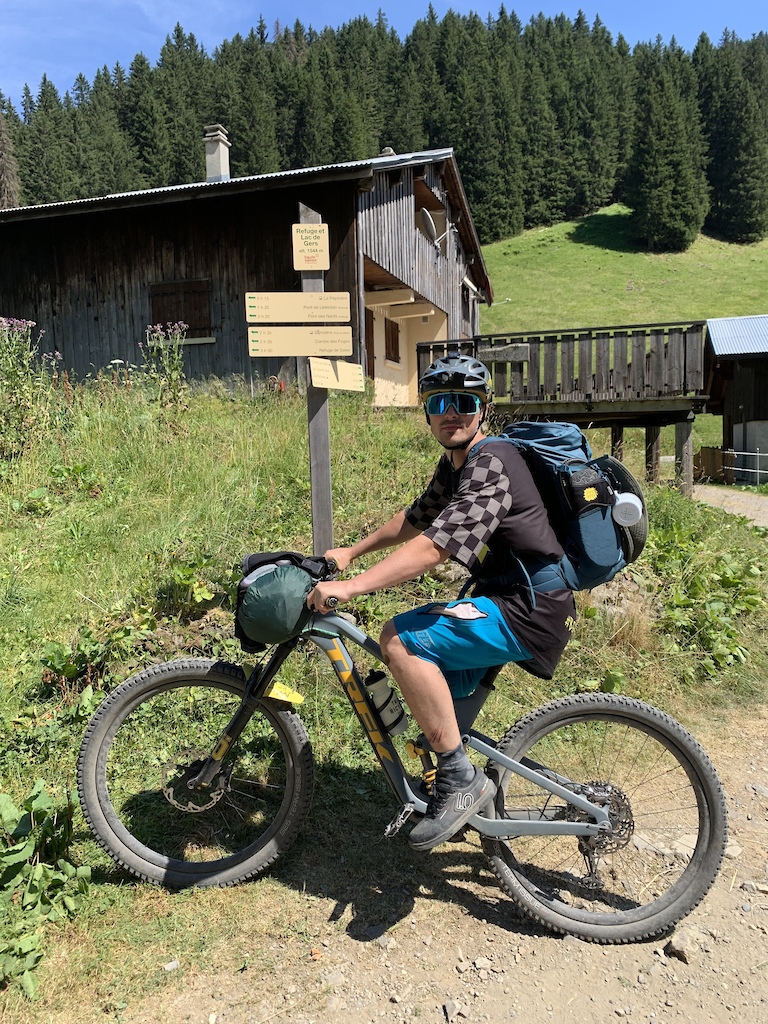
3 pairs of socks, t-shirts and underwear. So I can change, wash, and sun-dry them and still have one fresh in my backpack. Only rode in shorts. For chilly evenings in the mountains wear long pants and a windbreaker or rain jacket. I brought one towel to dry myself after swimming, but I only used it once because I was usually dry after 1 minute of getting out of the water due to the hot sun. I also took my Beerduro slip-ons for the best after-ride comfort. You can go even further and buy all of your shorts, shirts and trousers in this super-fast-drying material, but even with regular cotton, we made it and didn’t stink from a distance. Just use water to wash and dry it while you pedal or push your bike up. Of course it was funny to see those smiles when they saw my undies hanging from my handlebars, but who cares—we bikepack.
Some blood, sweat and no tears, but a lot of effort and adventures later, 18 days after we dipped our bodies in Lake Leman near Geneva, we reached our destination point: Nice. It was very overwhelming for all of us. We went into full tourist mode and enjoyed three days in this Mediterranean sea city, which was both satisfying and relieving. Good times, sun, sea and celebratory drinks. Also thanks to “Bouticycle Nice” for hooking us up with fresh cardboard boxes for our flight home.
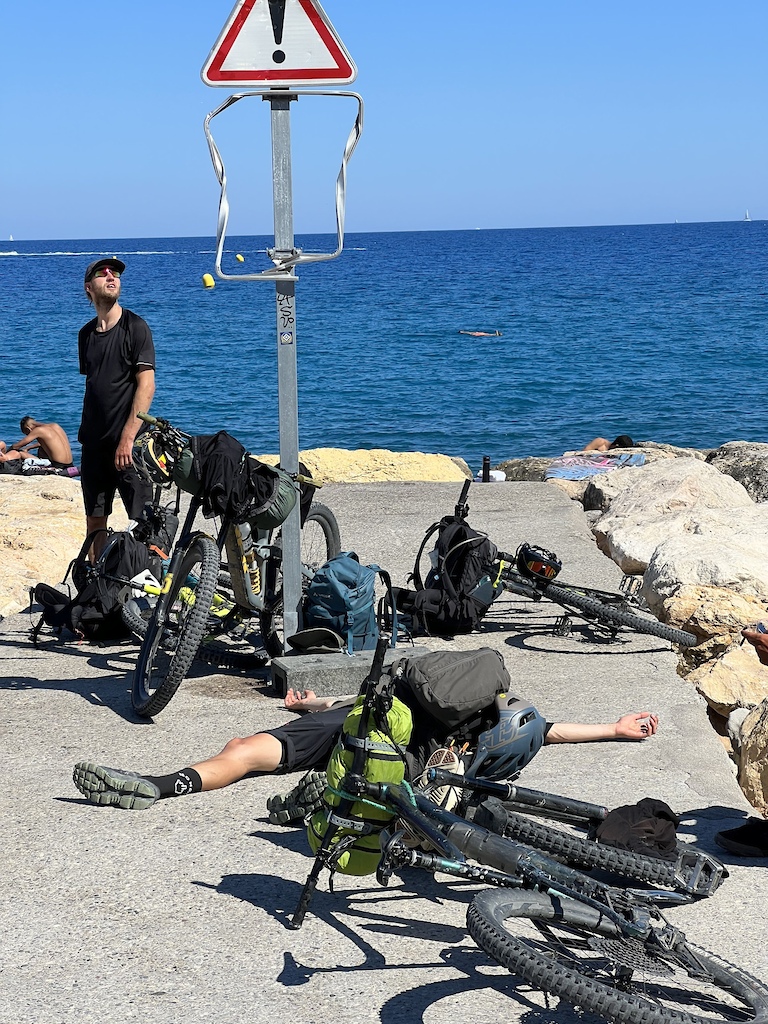
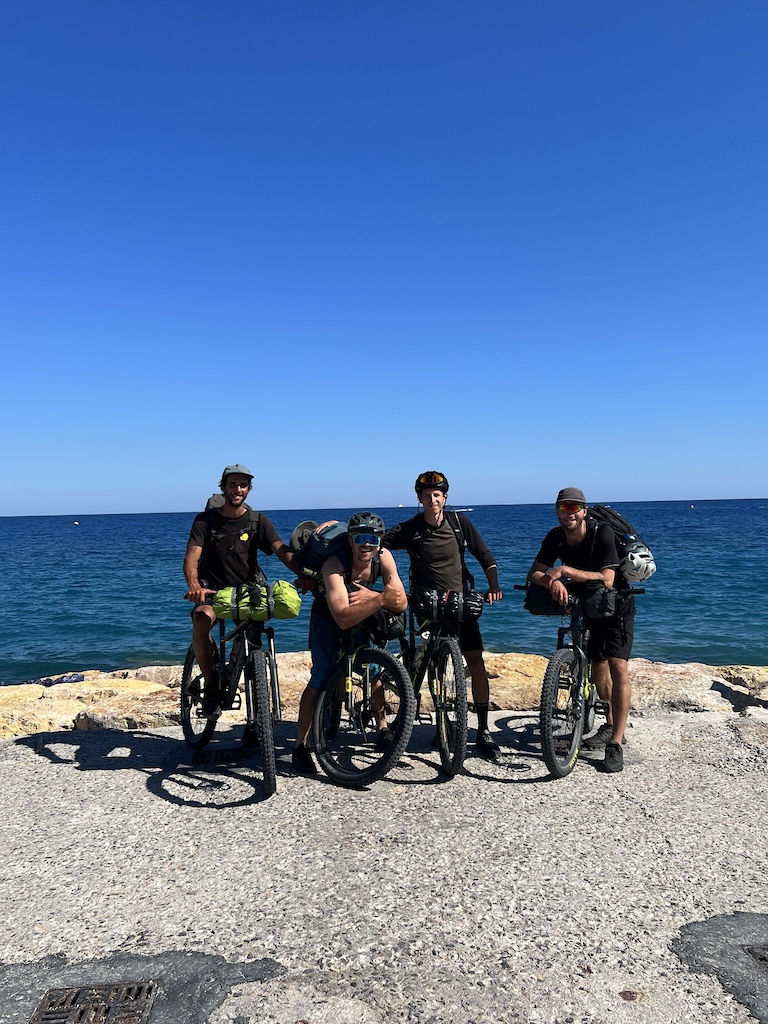
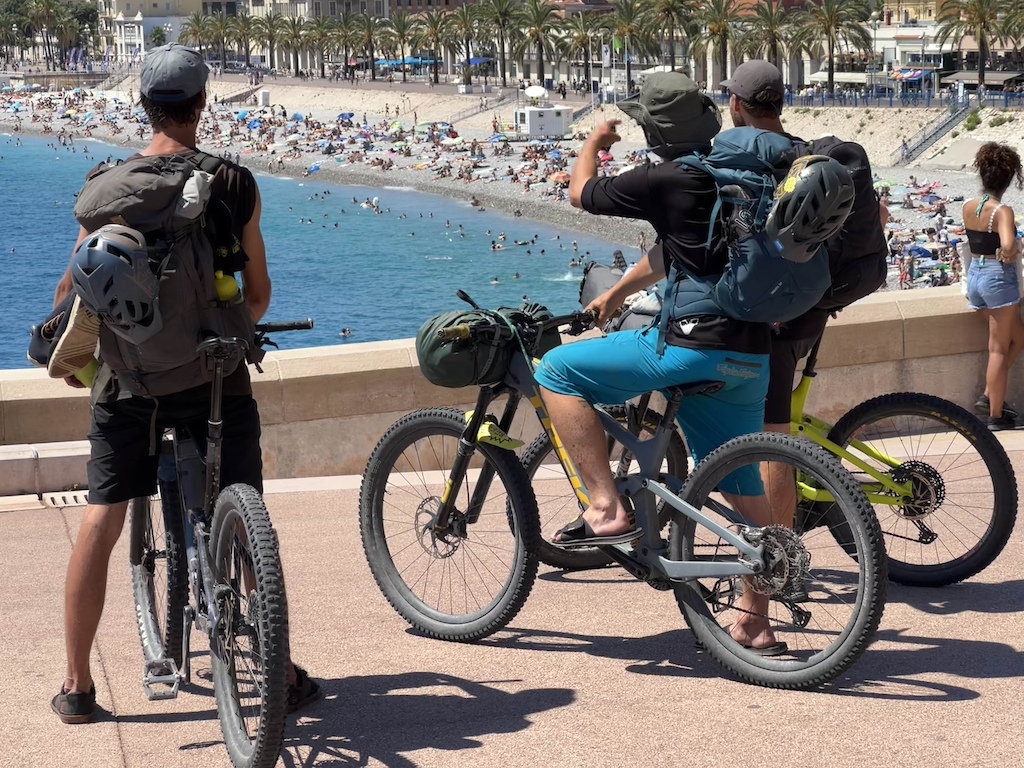
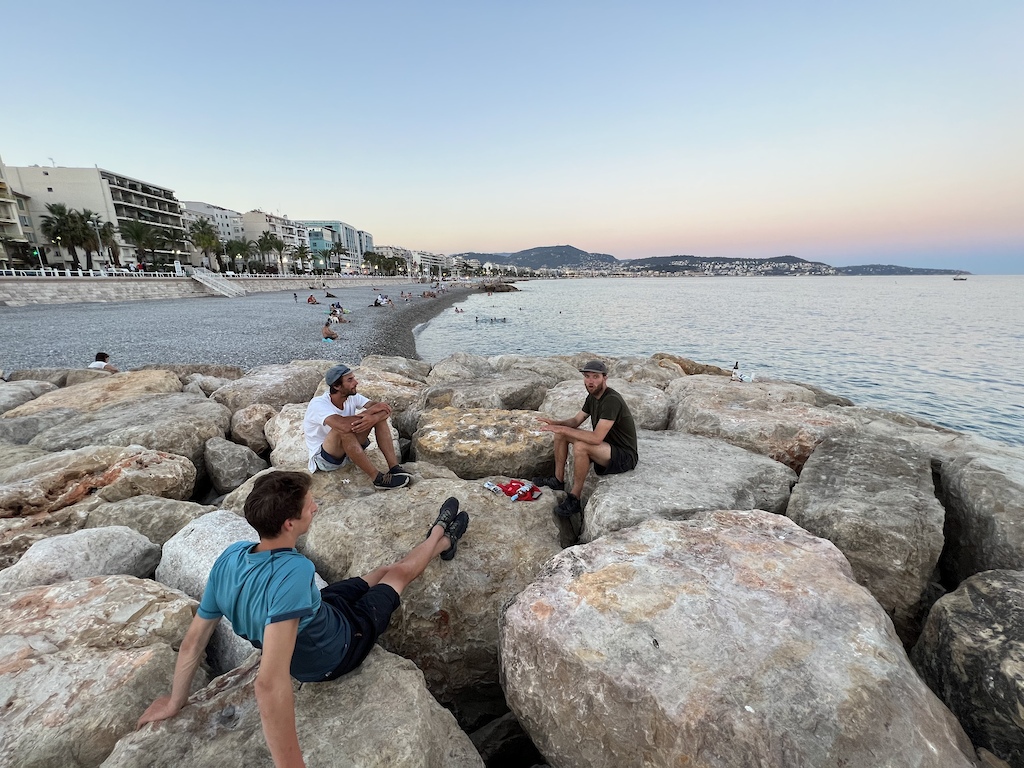
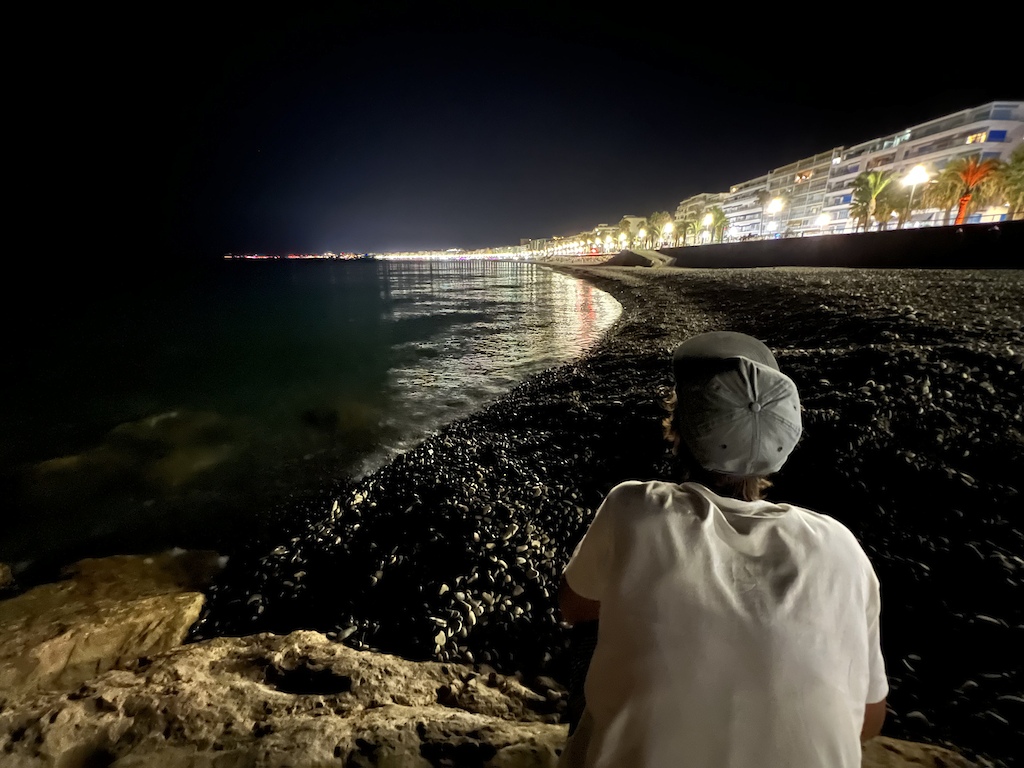
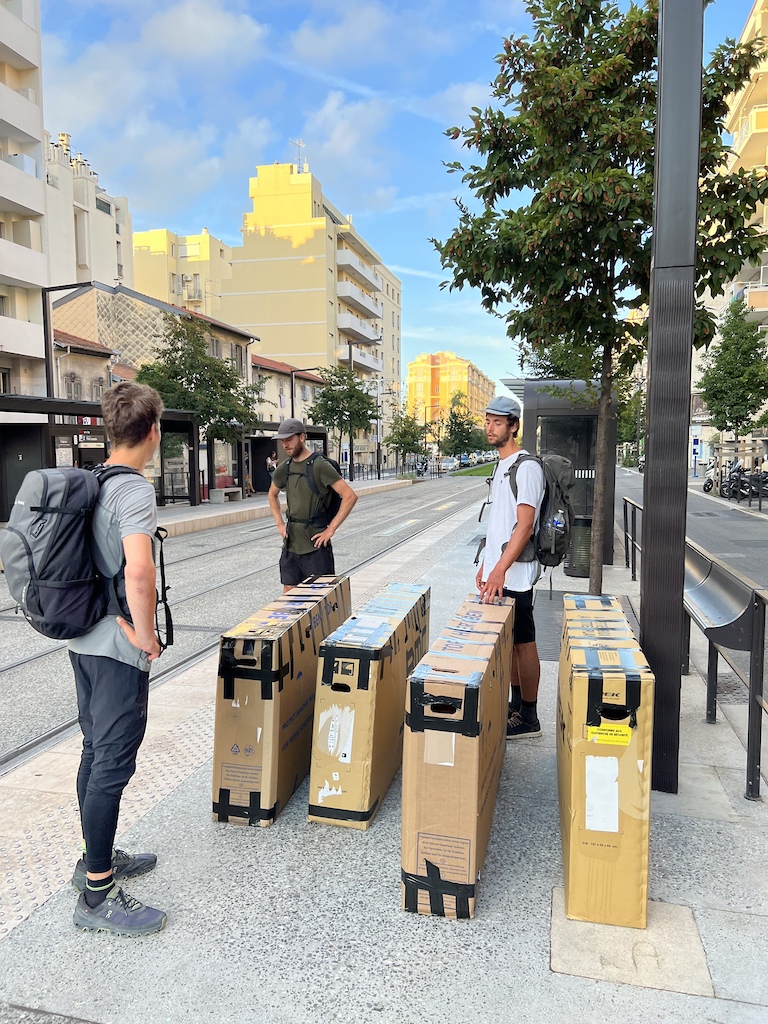
Overall, it was one hell of an action-packed two and a half weeks in the mountains. And no matter what route or what trail you take, whatever kind of bike, fancy clothes or camping gear you have, the main thing here is your friends. Trip buddies, with whom you share the adventure and make stories. In the end, after you come back, only memories and stories will be left. This is our story.


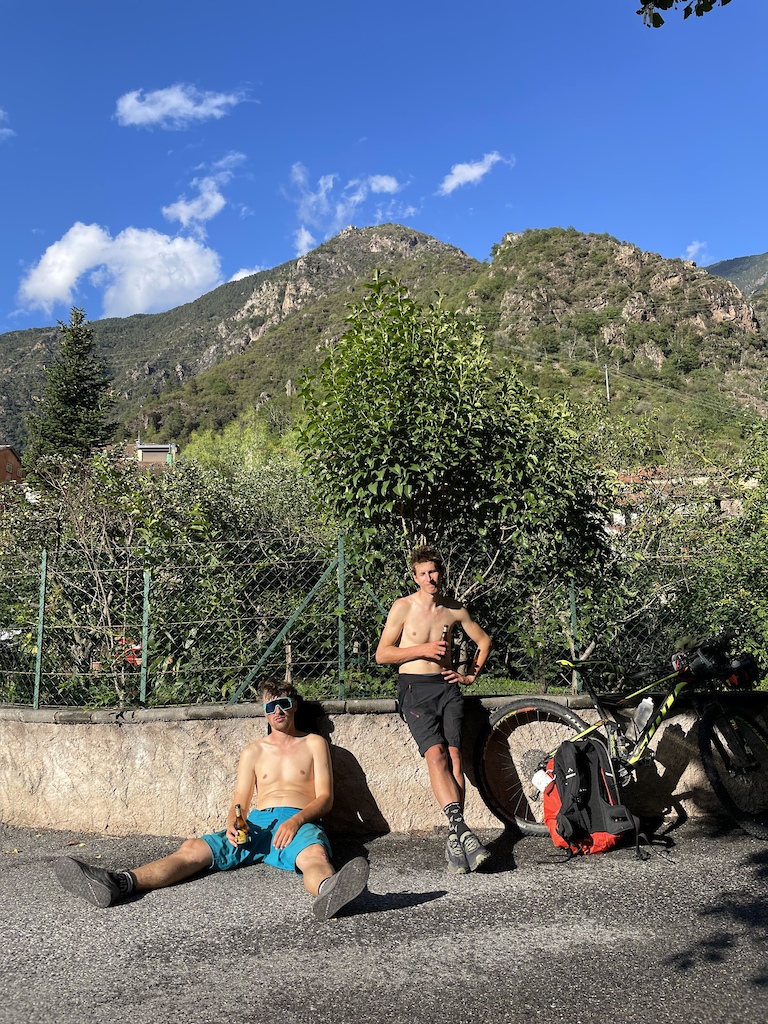
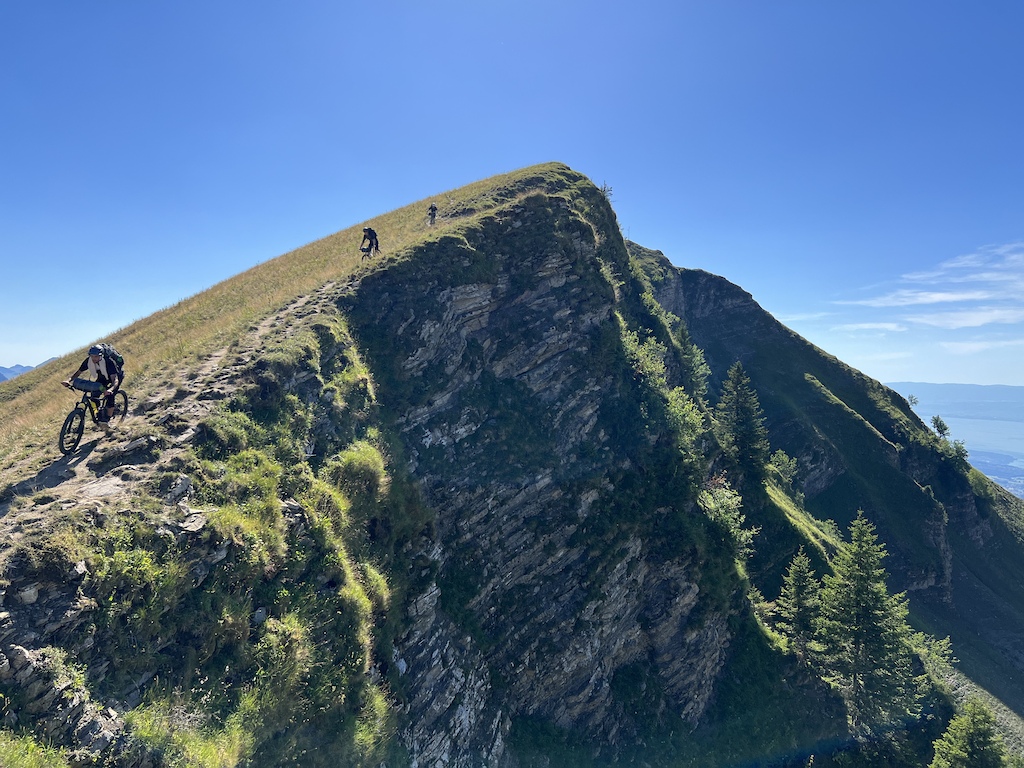
Make up your story! Go Bikepacking!
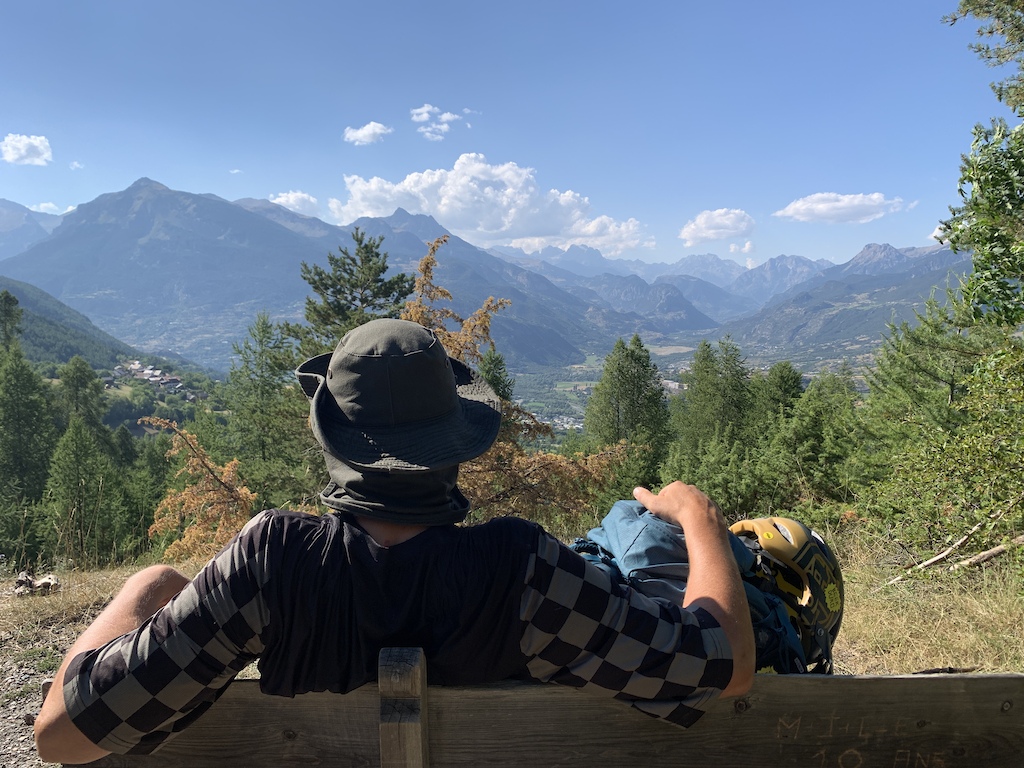
Riders:
Gusts Ošmucnieks
Edgars Bērziņš
Kaspars Alksnis
Jānis Zālītis
Words by Gusts Ošmucnieks
Photos from our iPhones
Video shot on GoPro and our iPhones
Music by Dubra, Edavārdi and Čižiks
